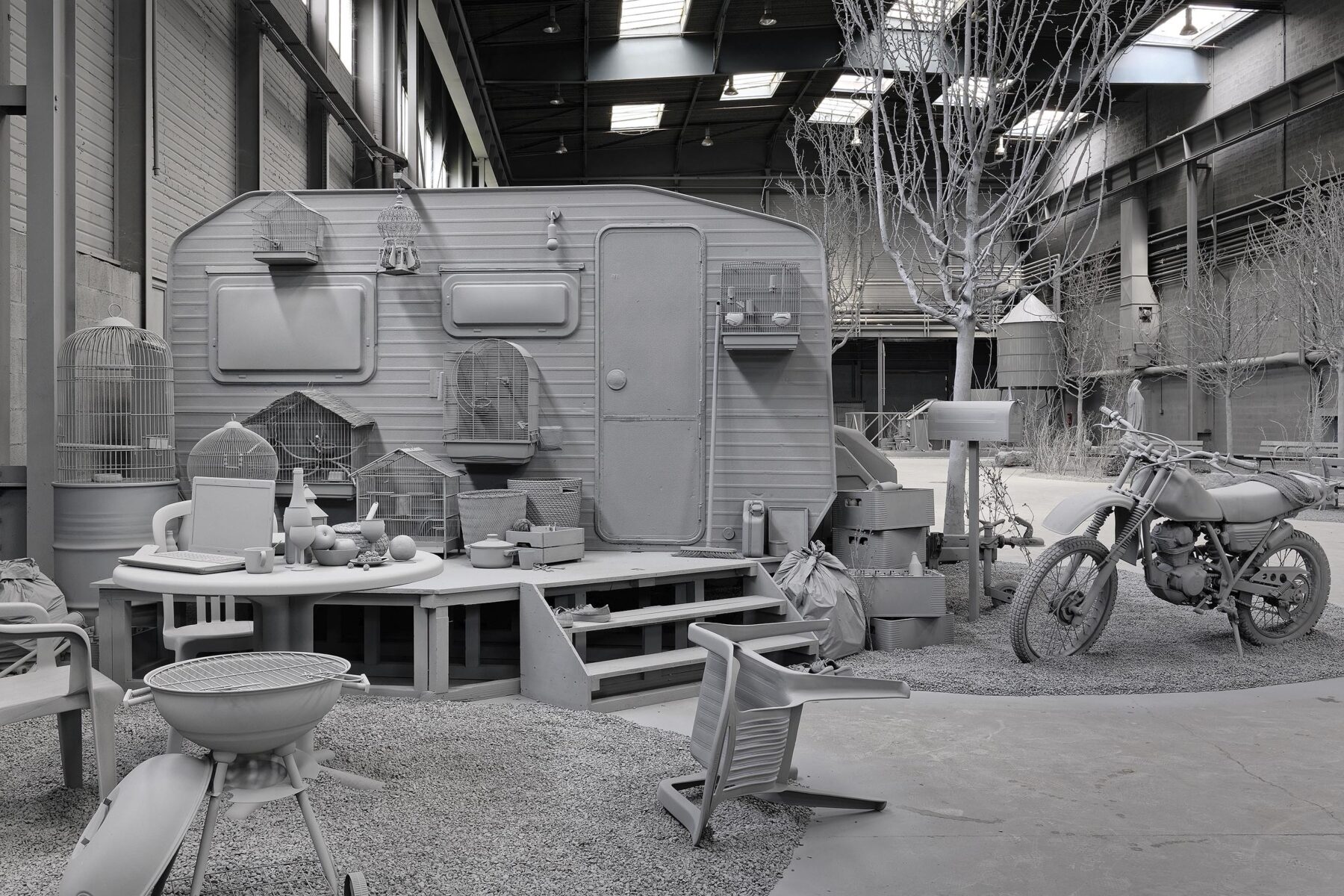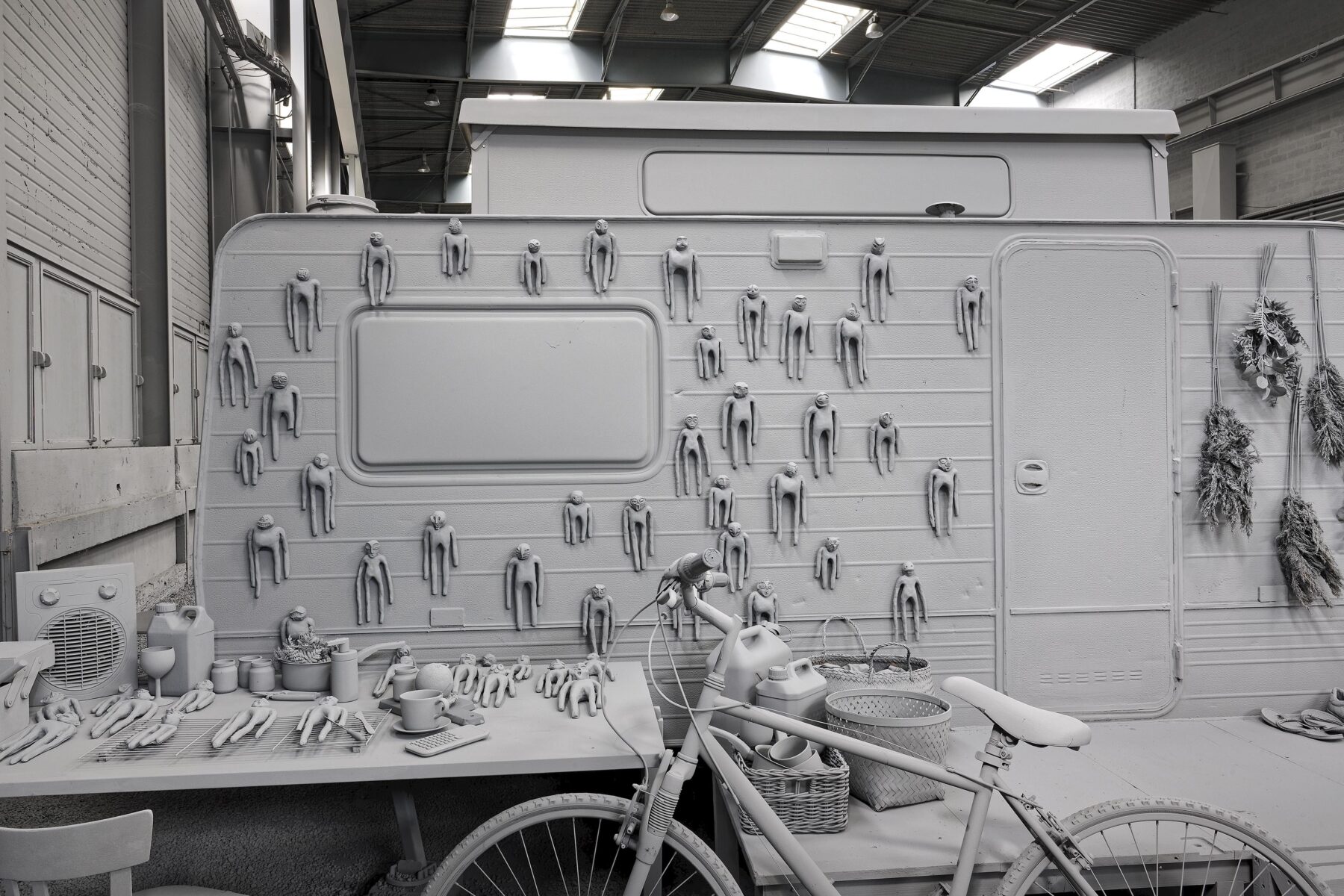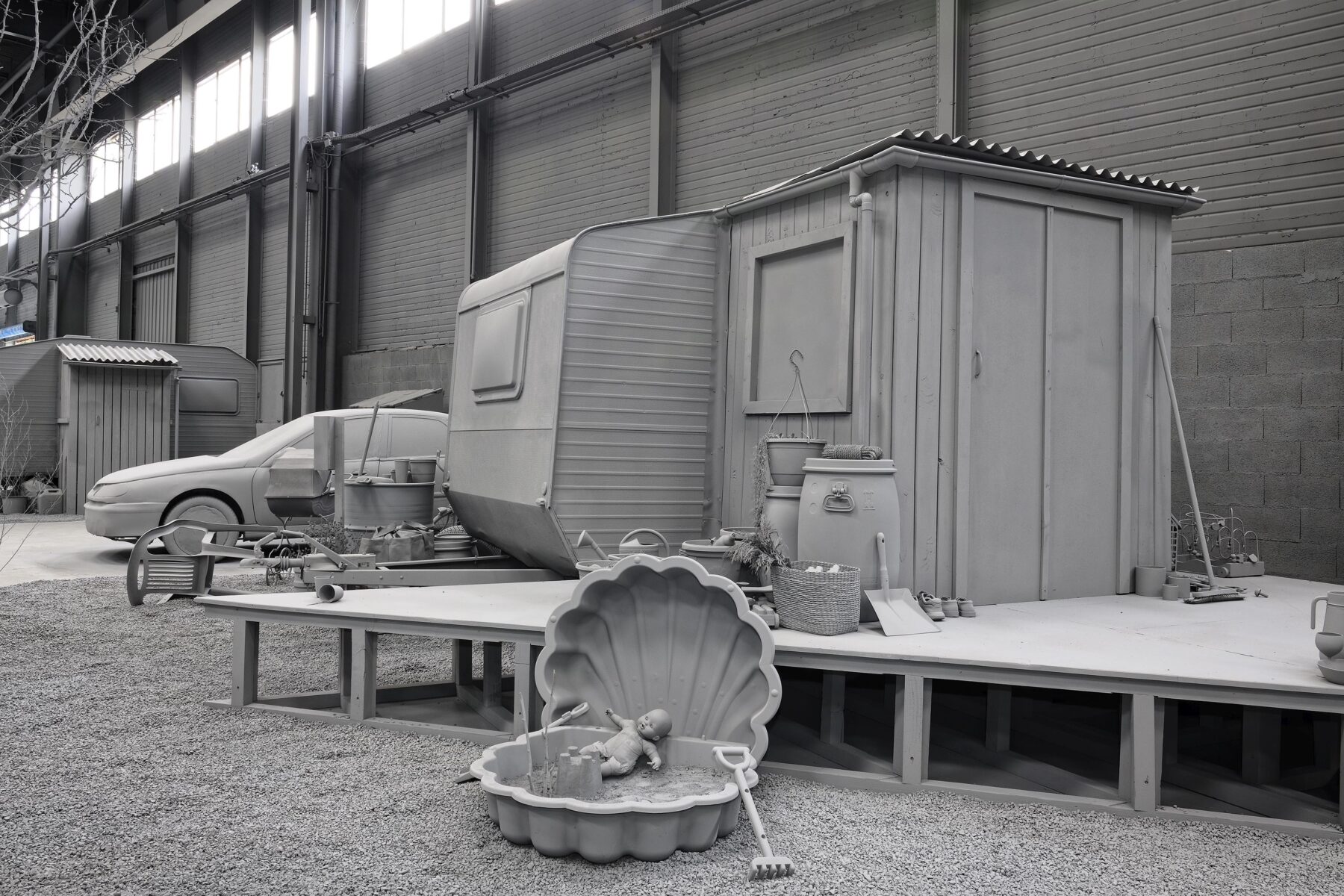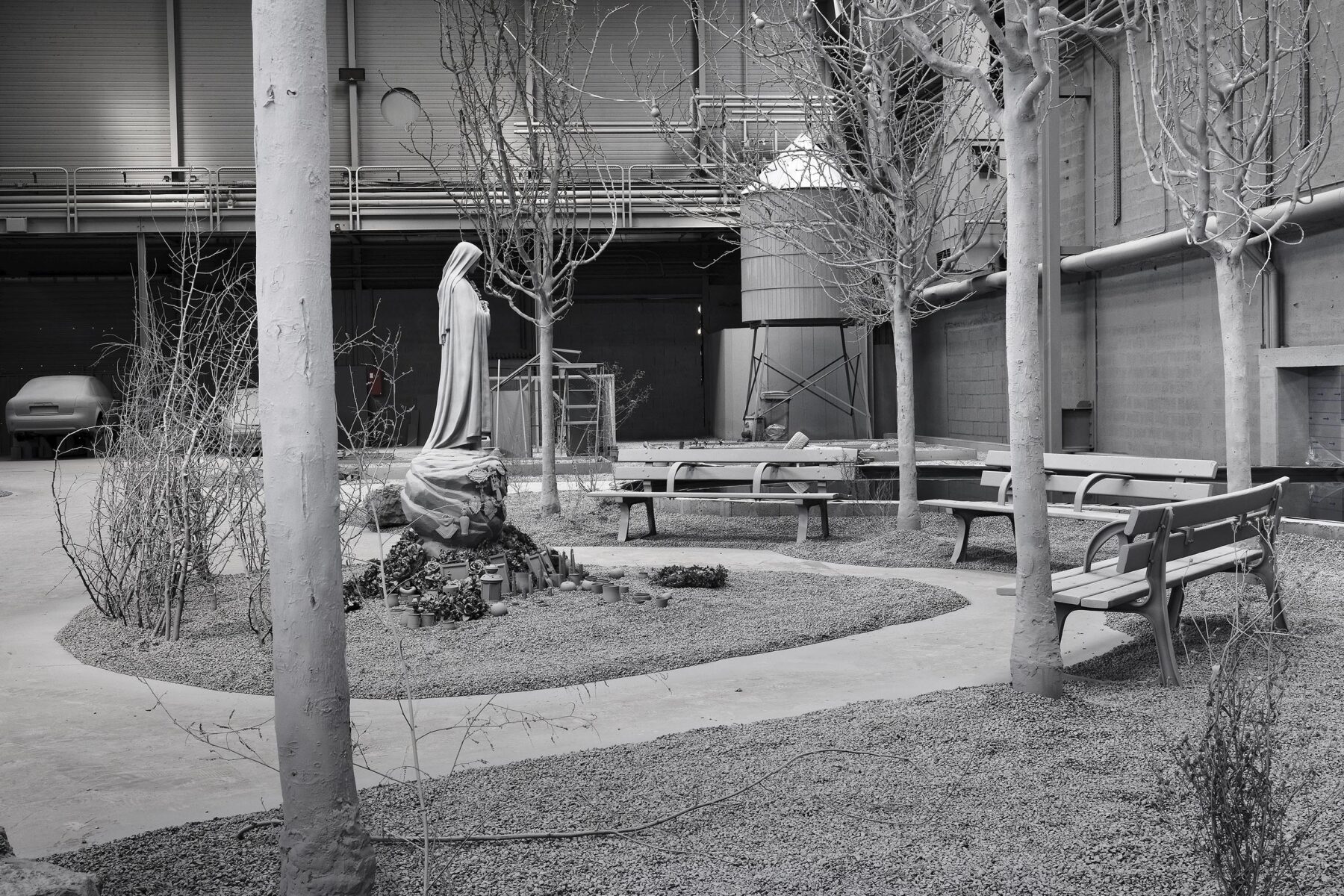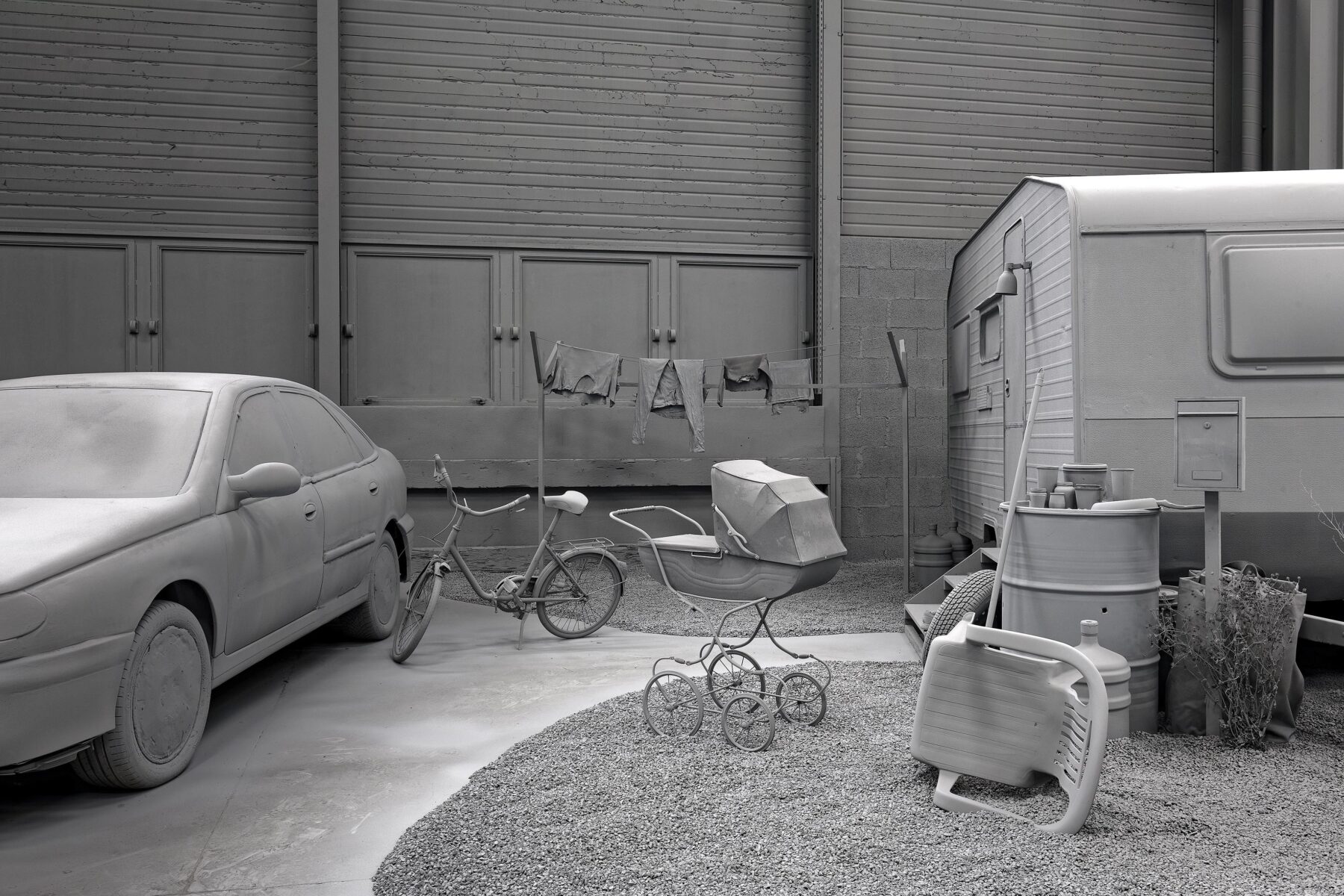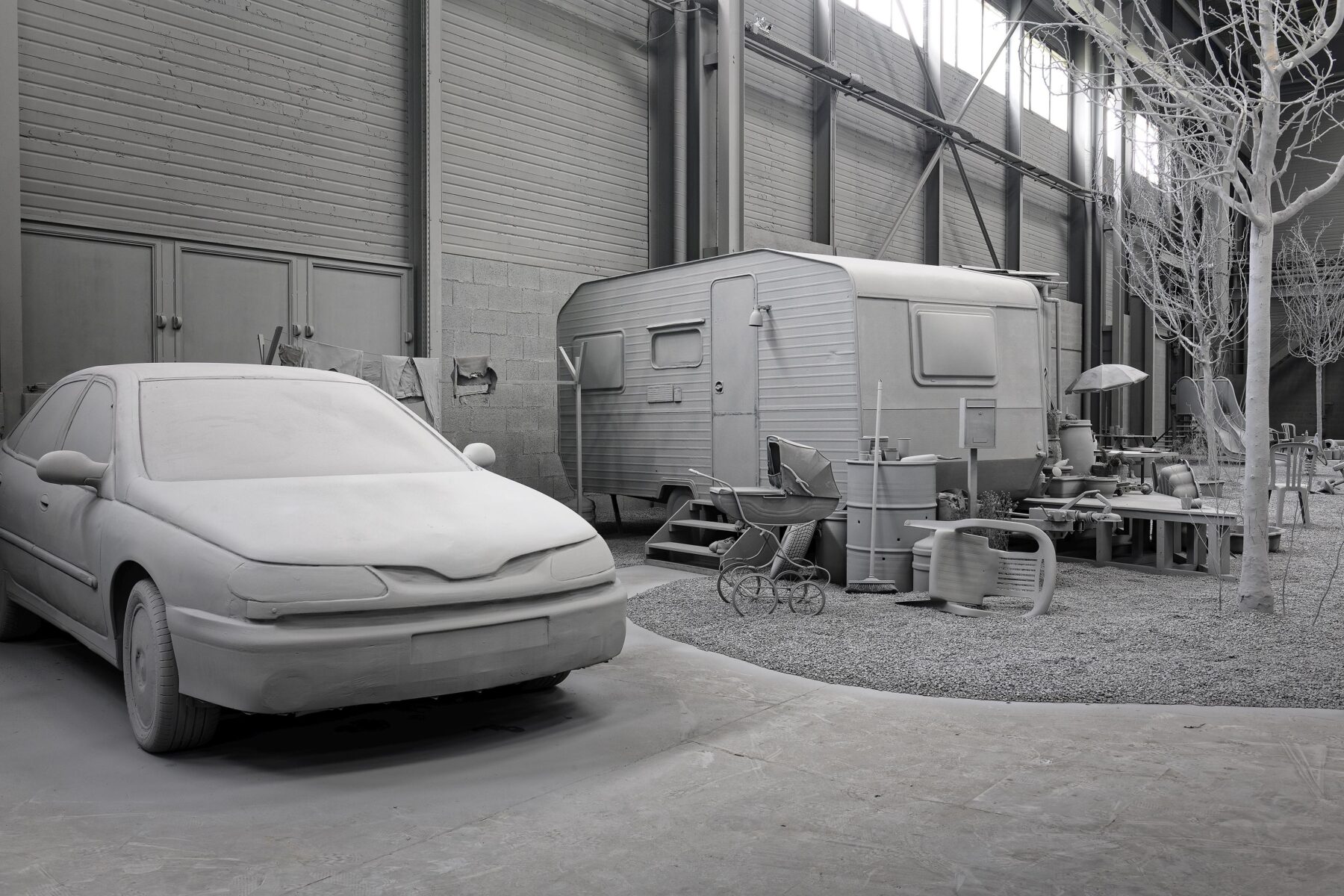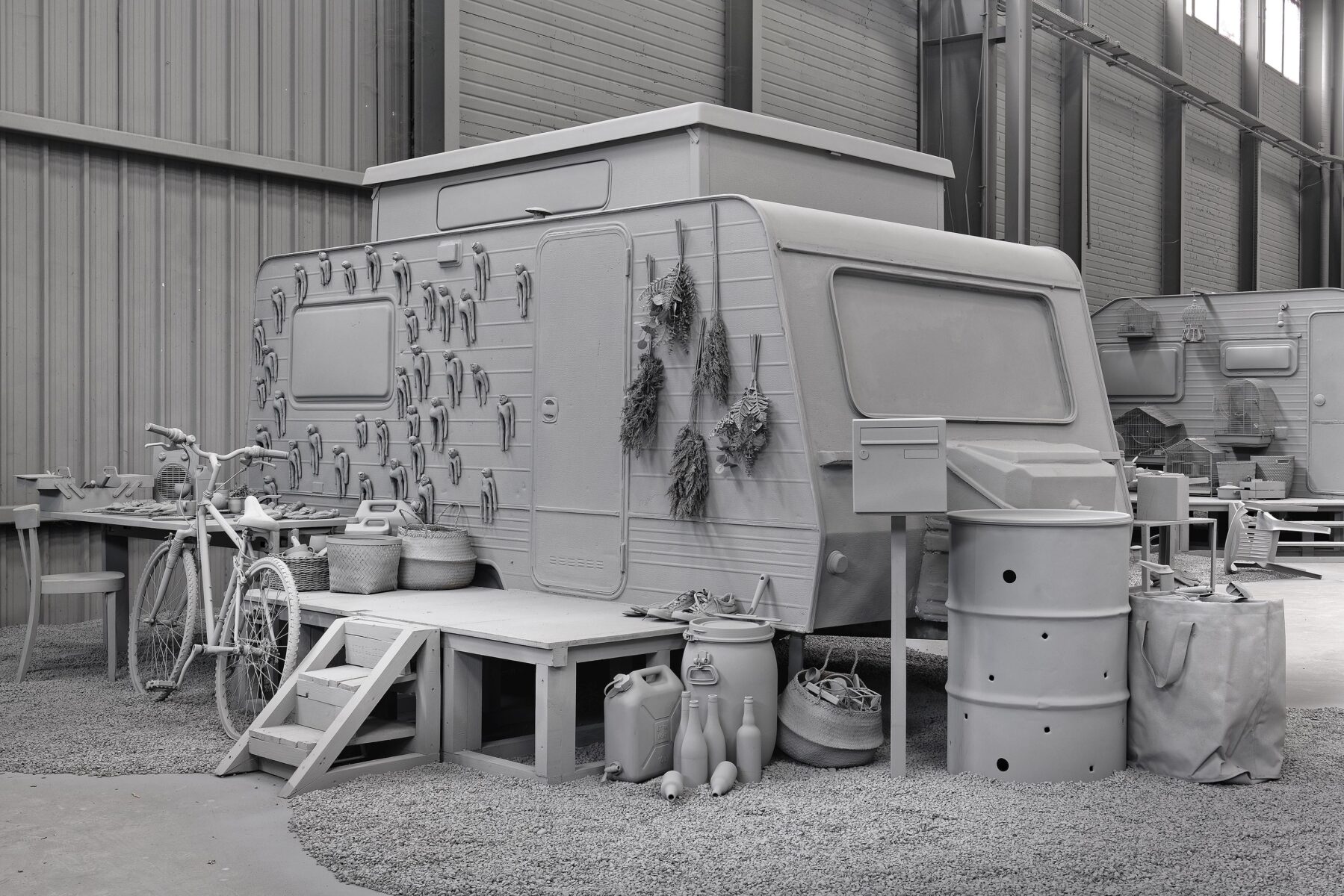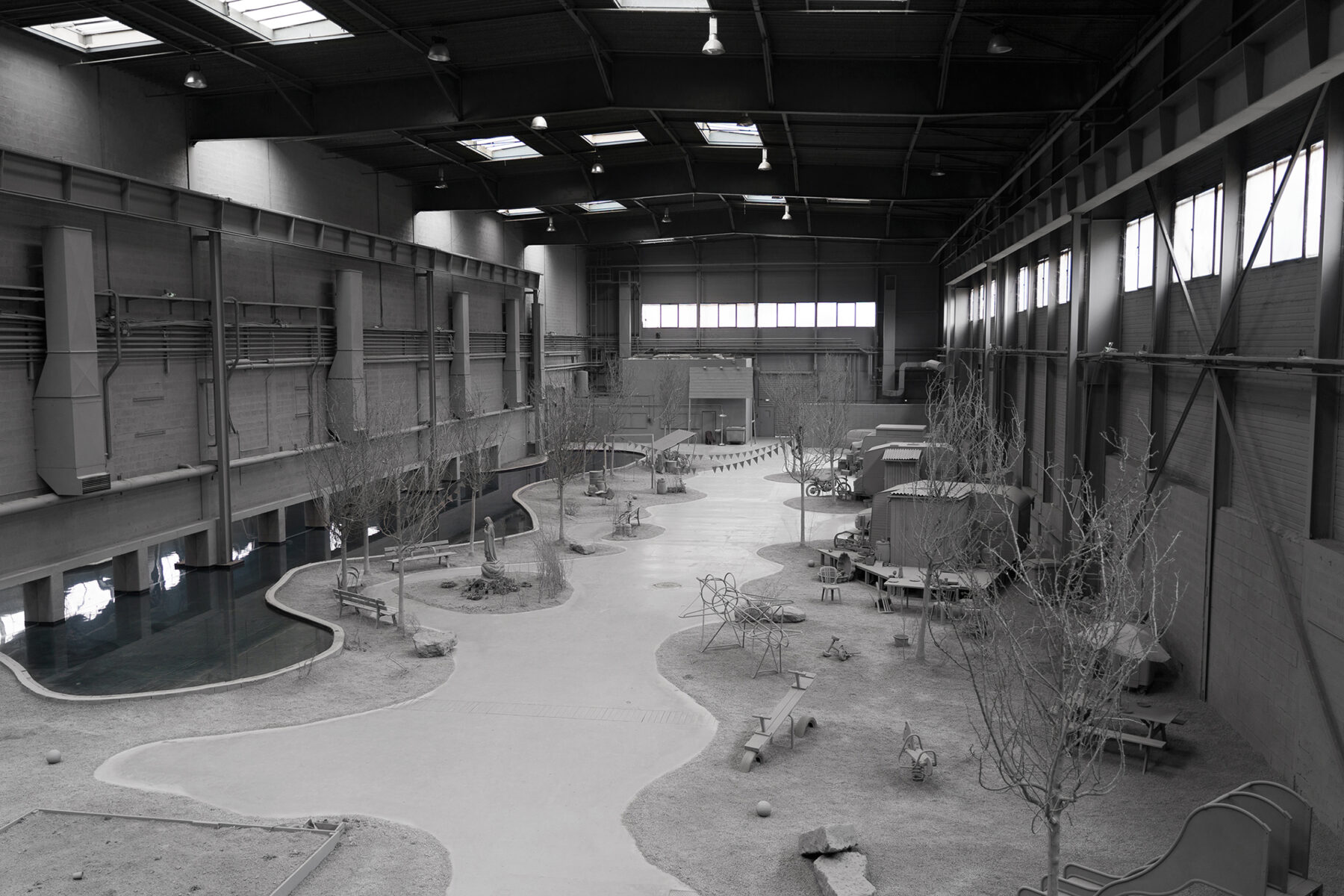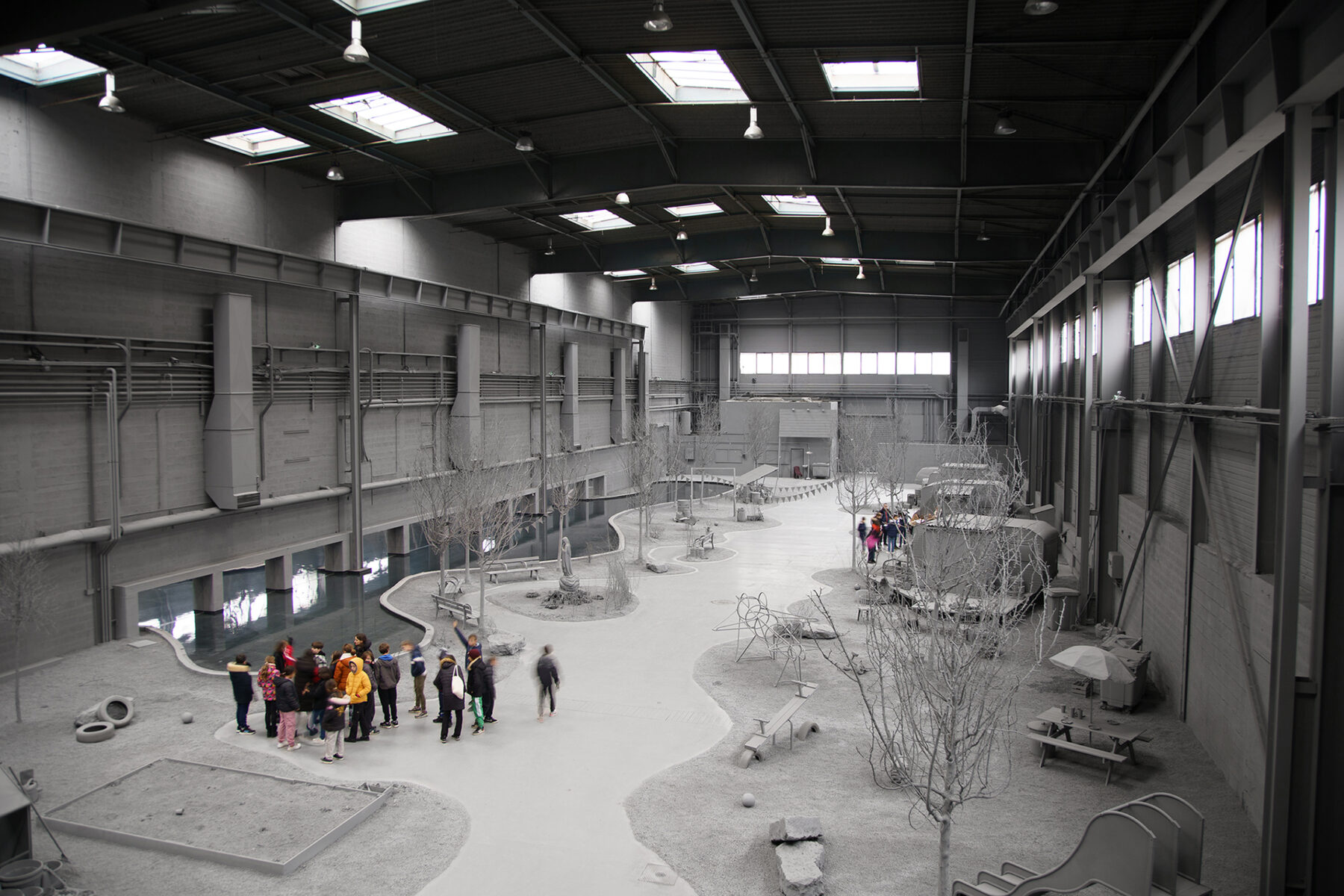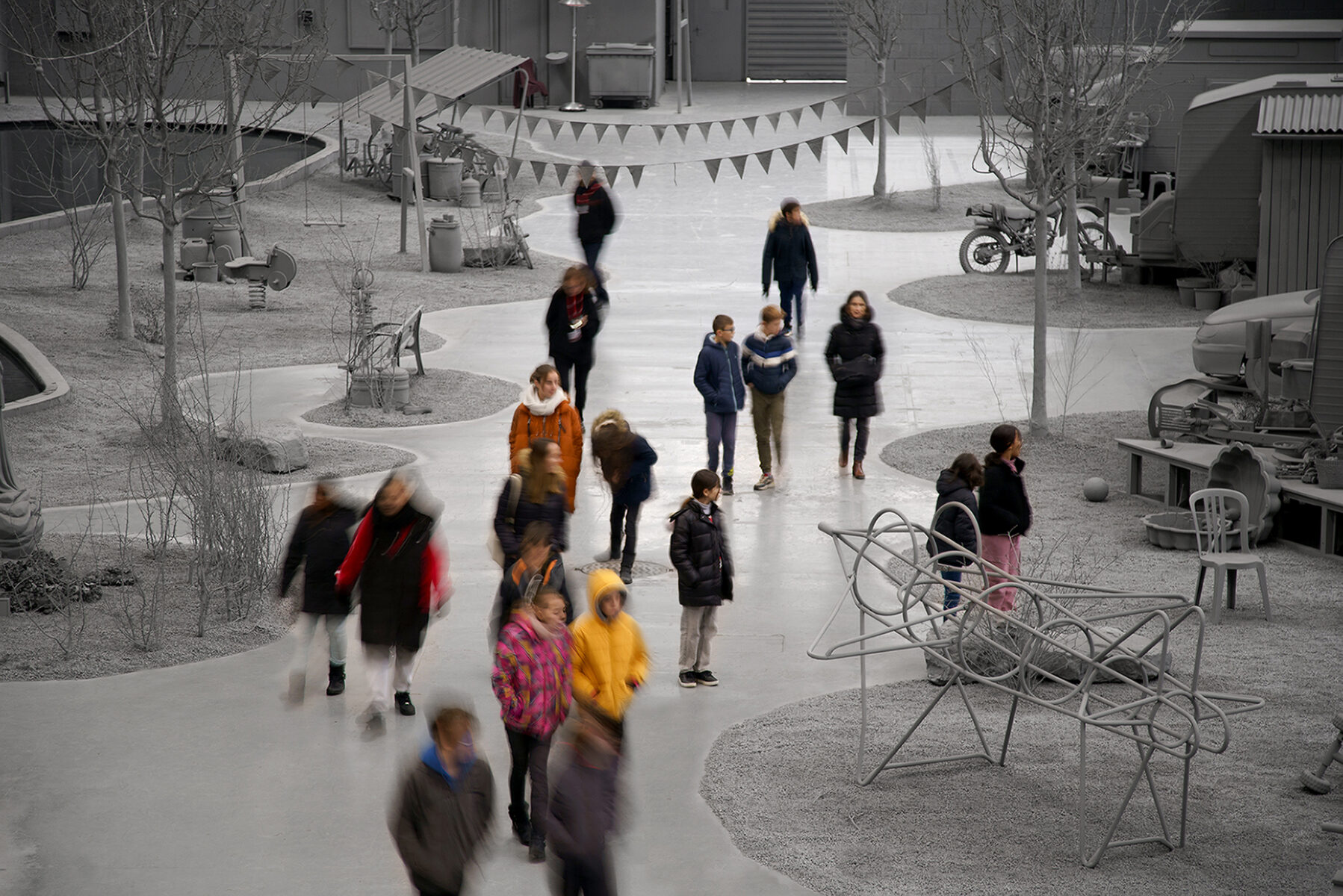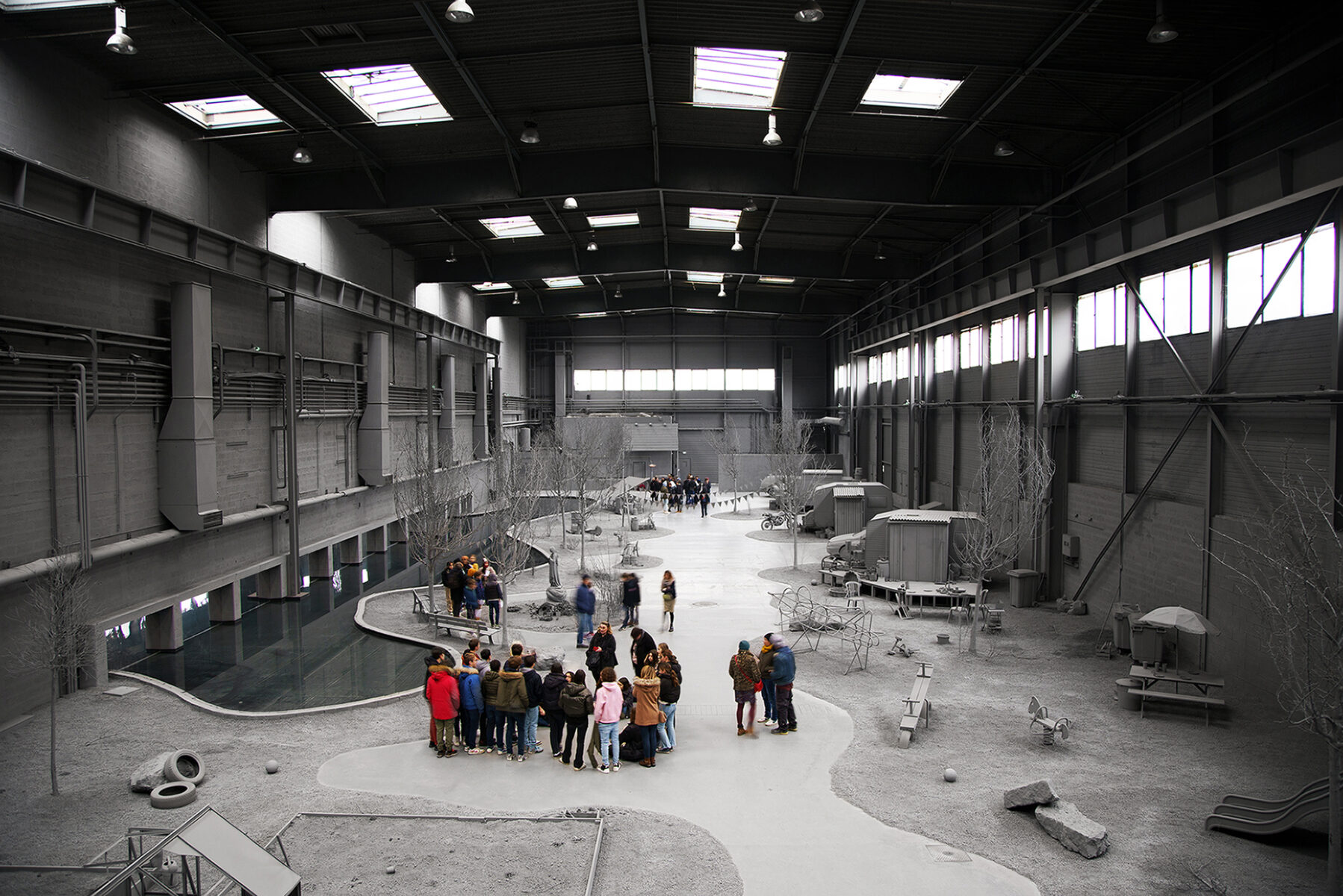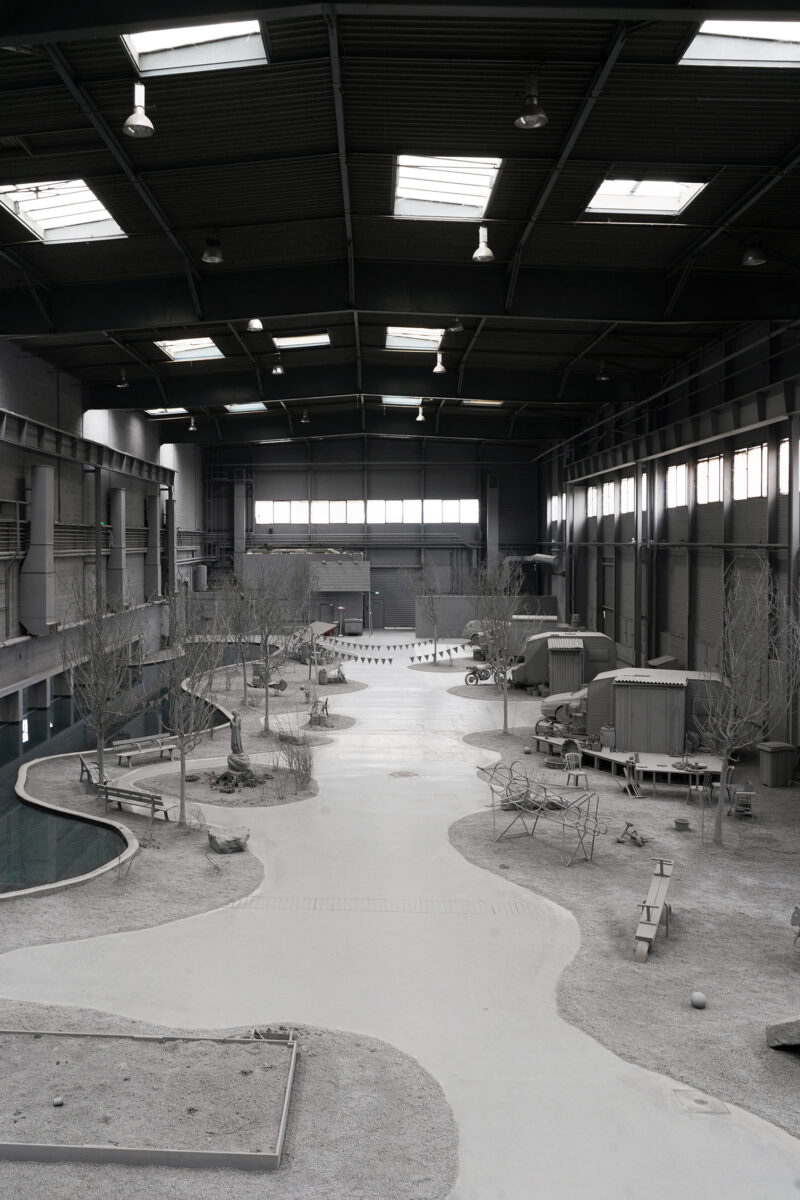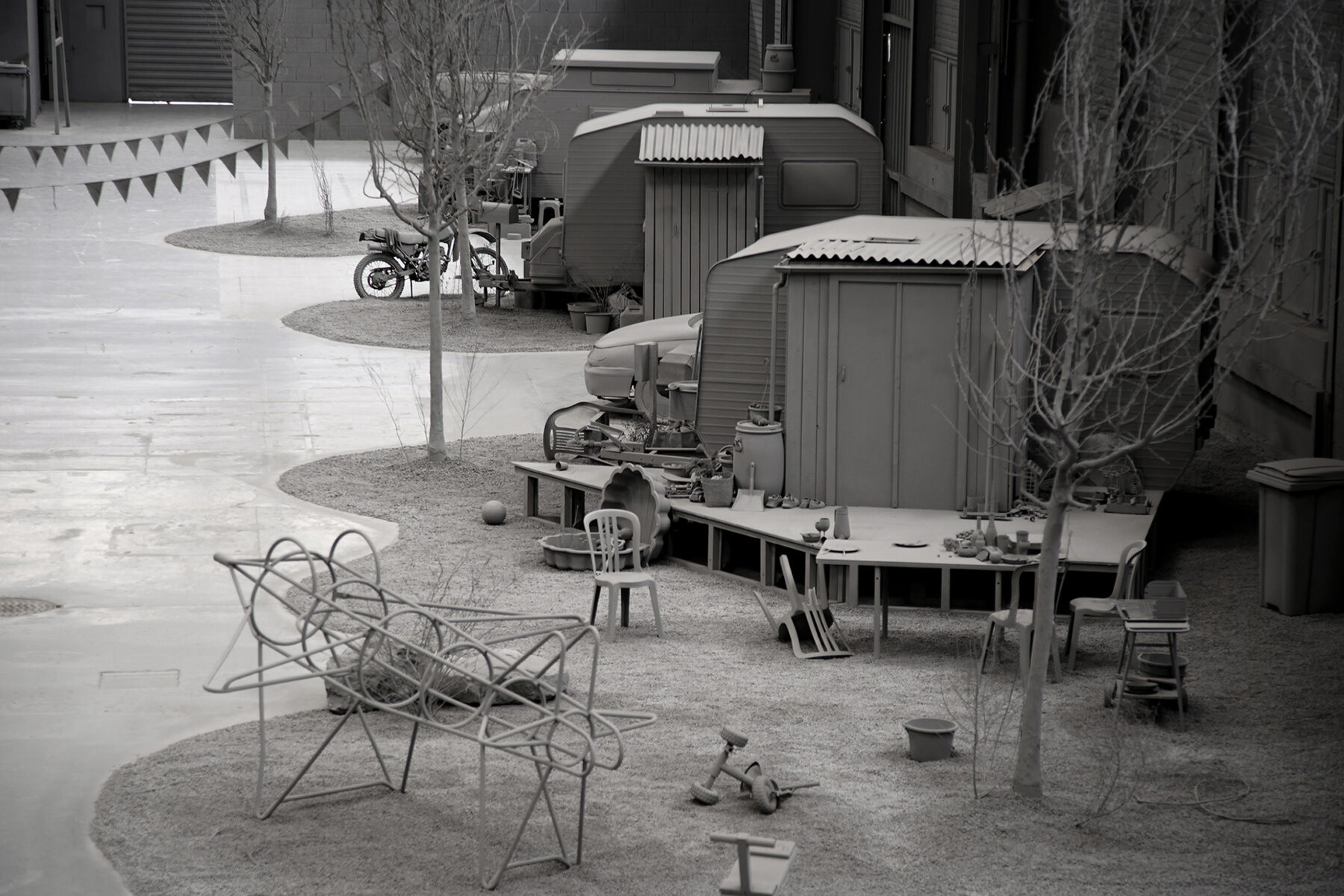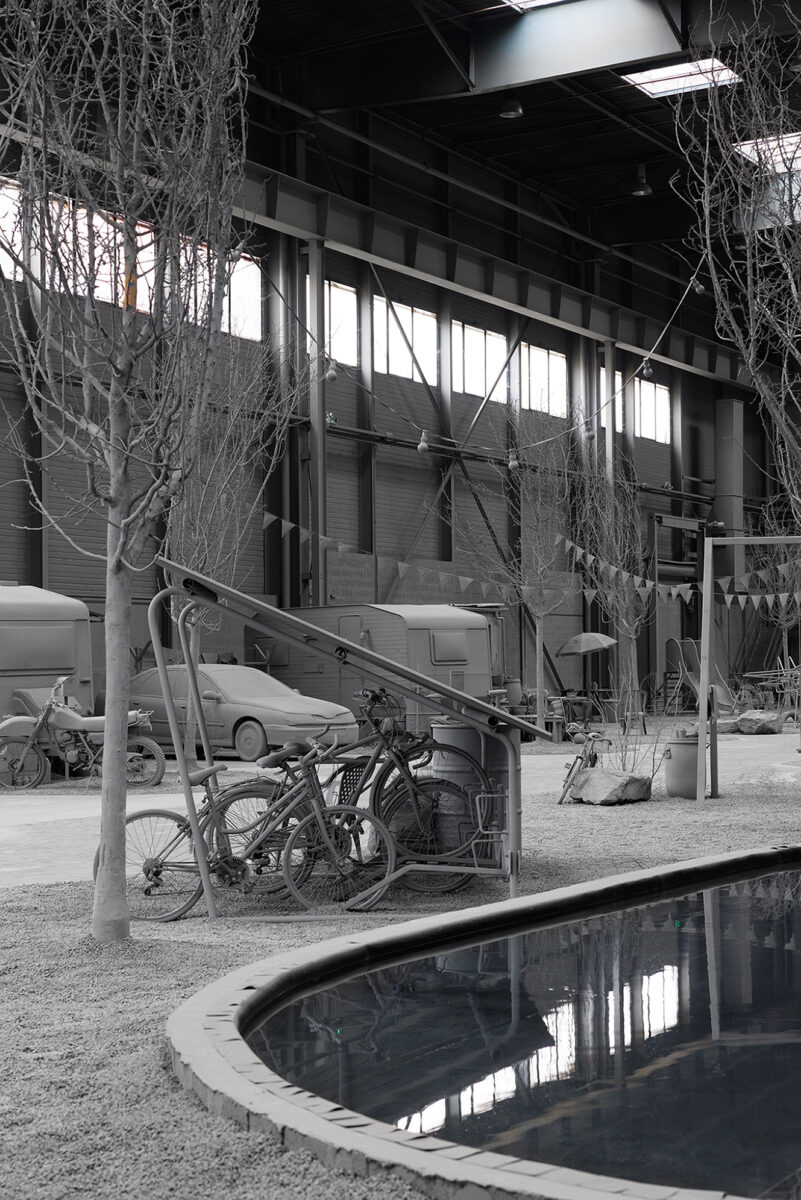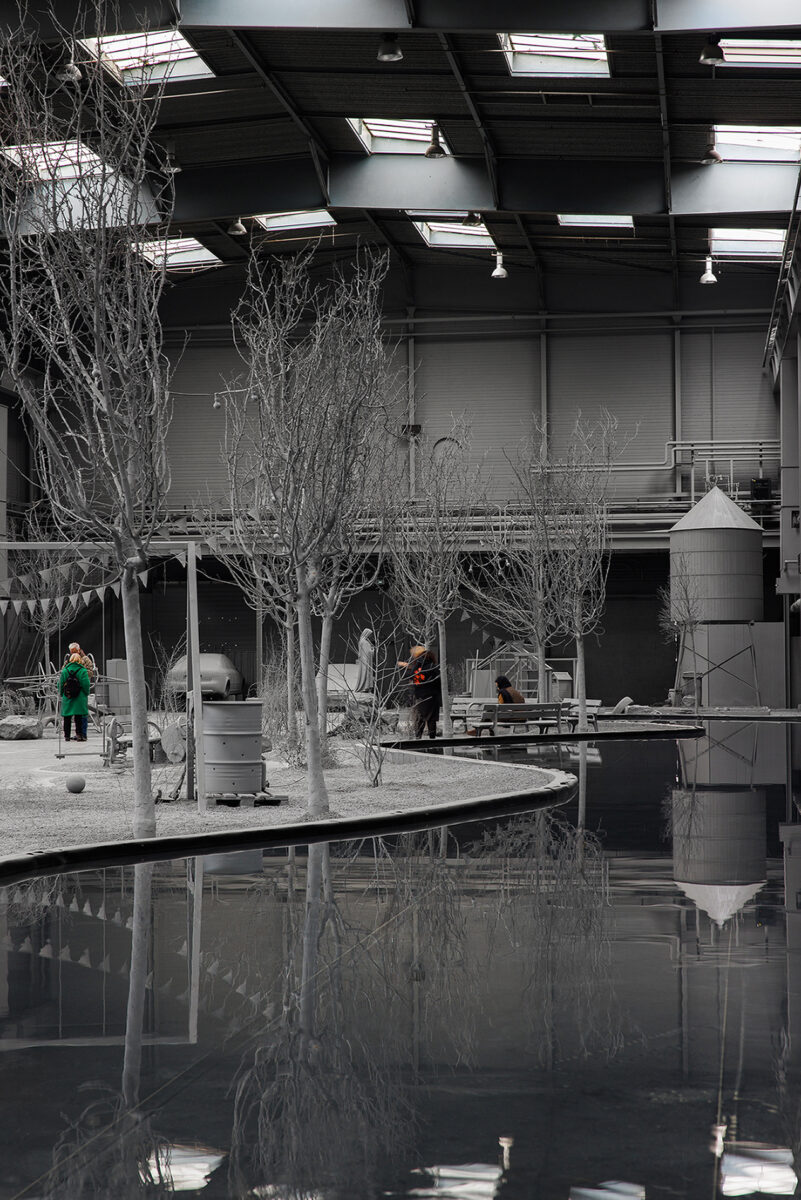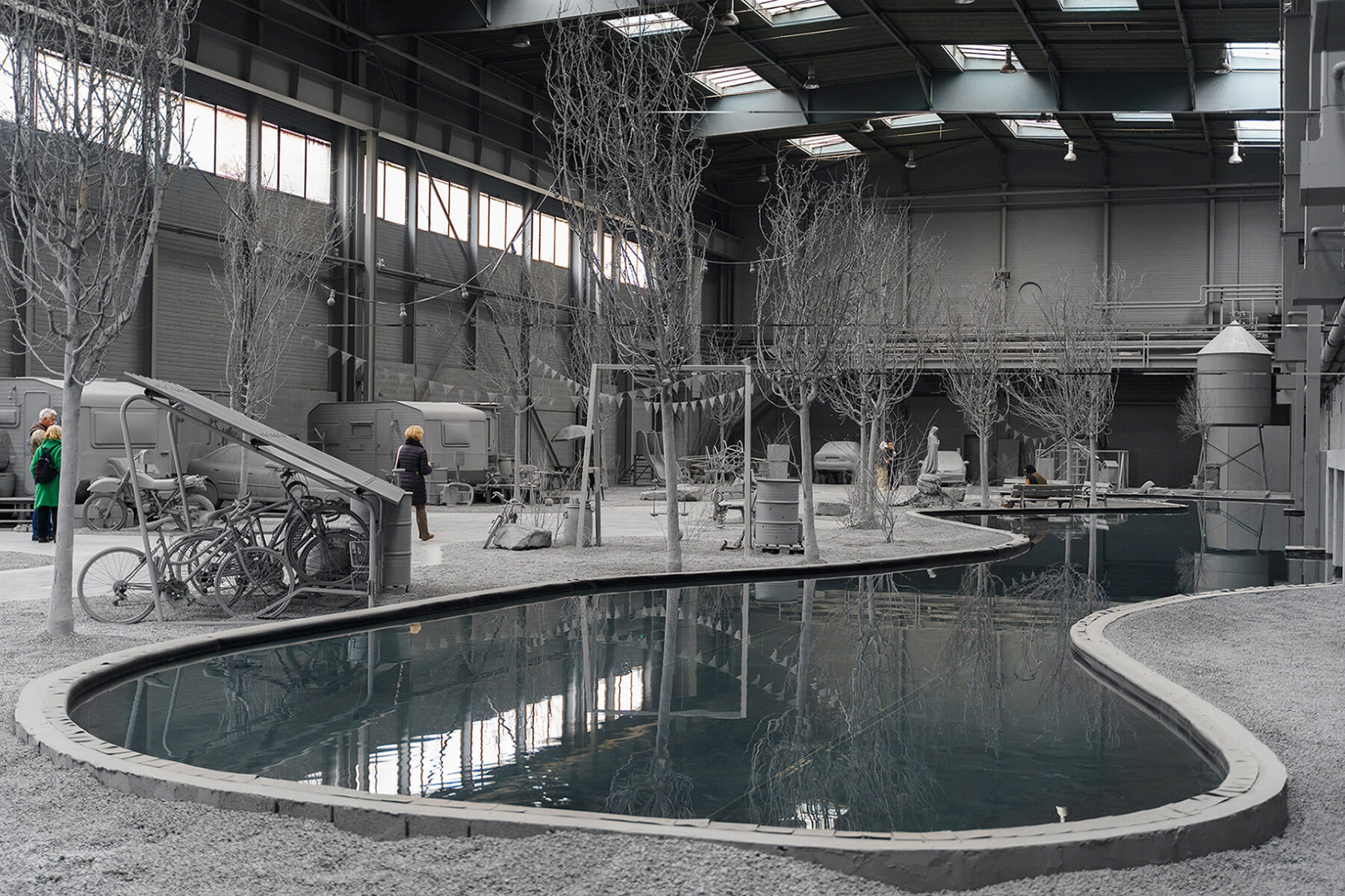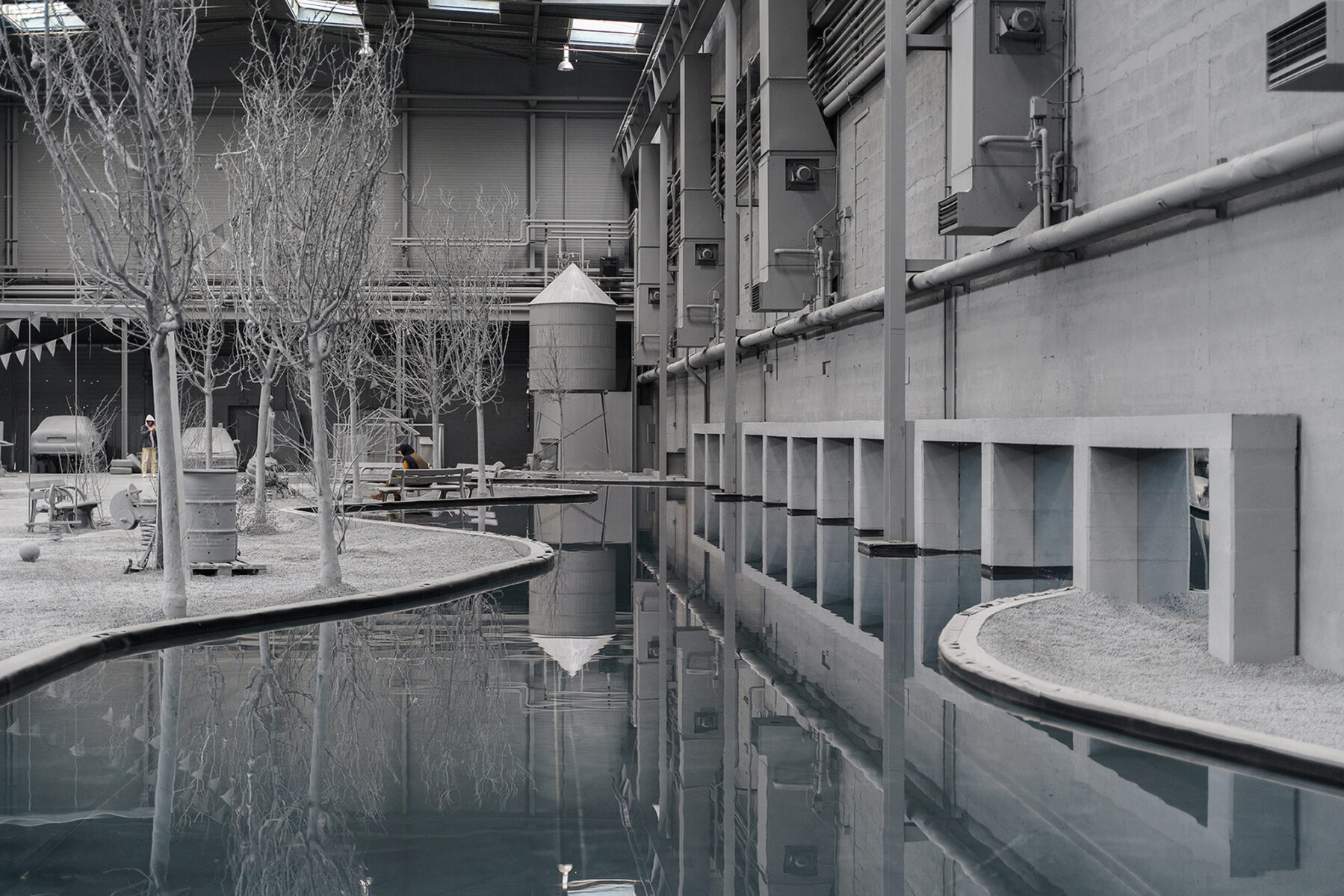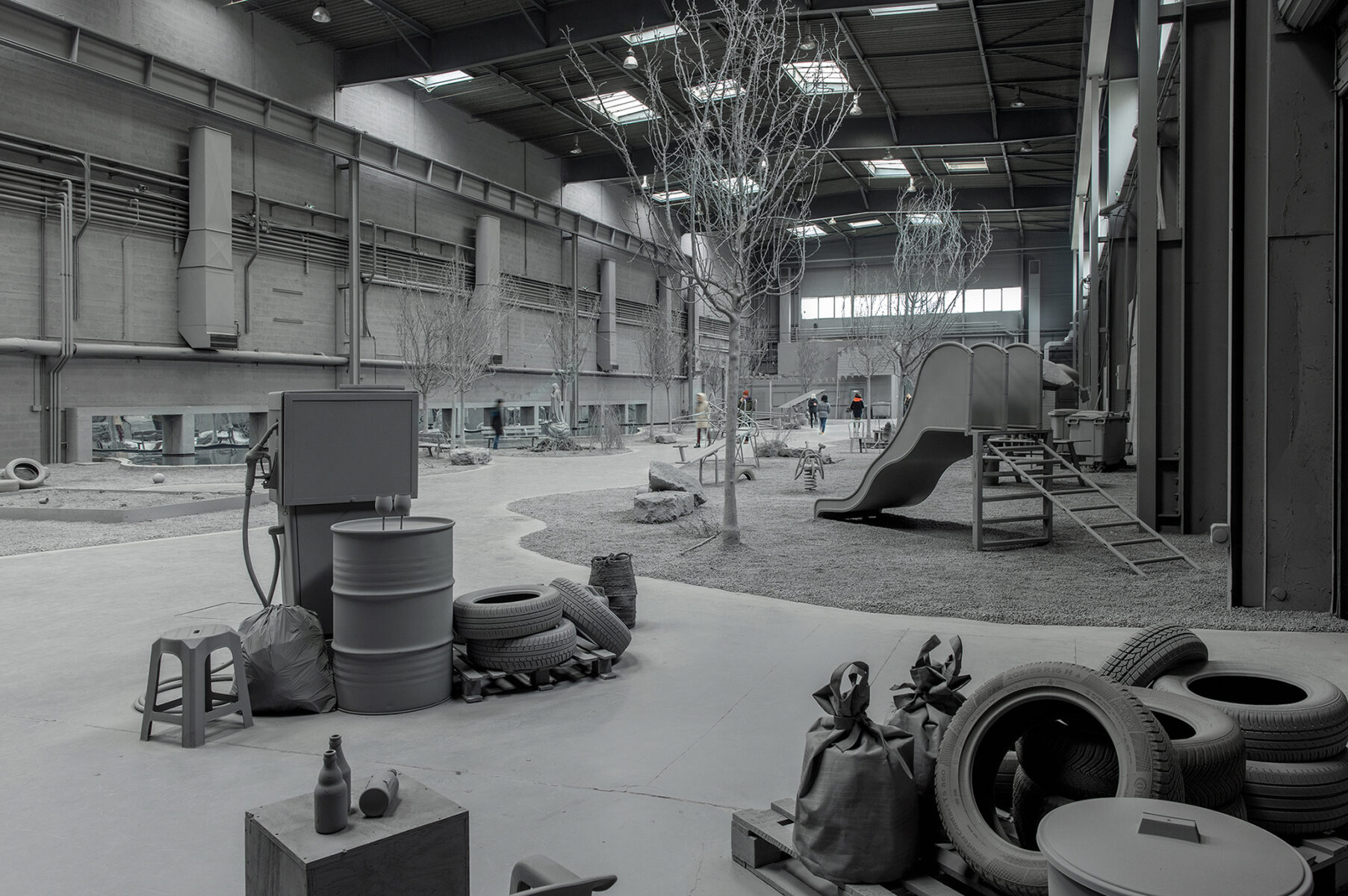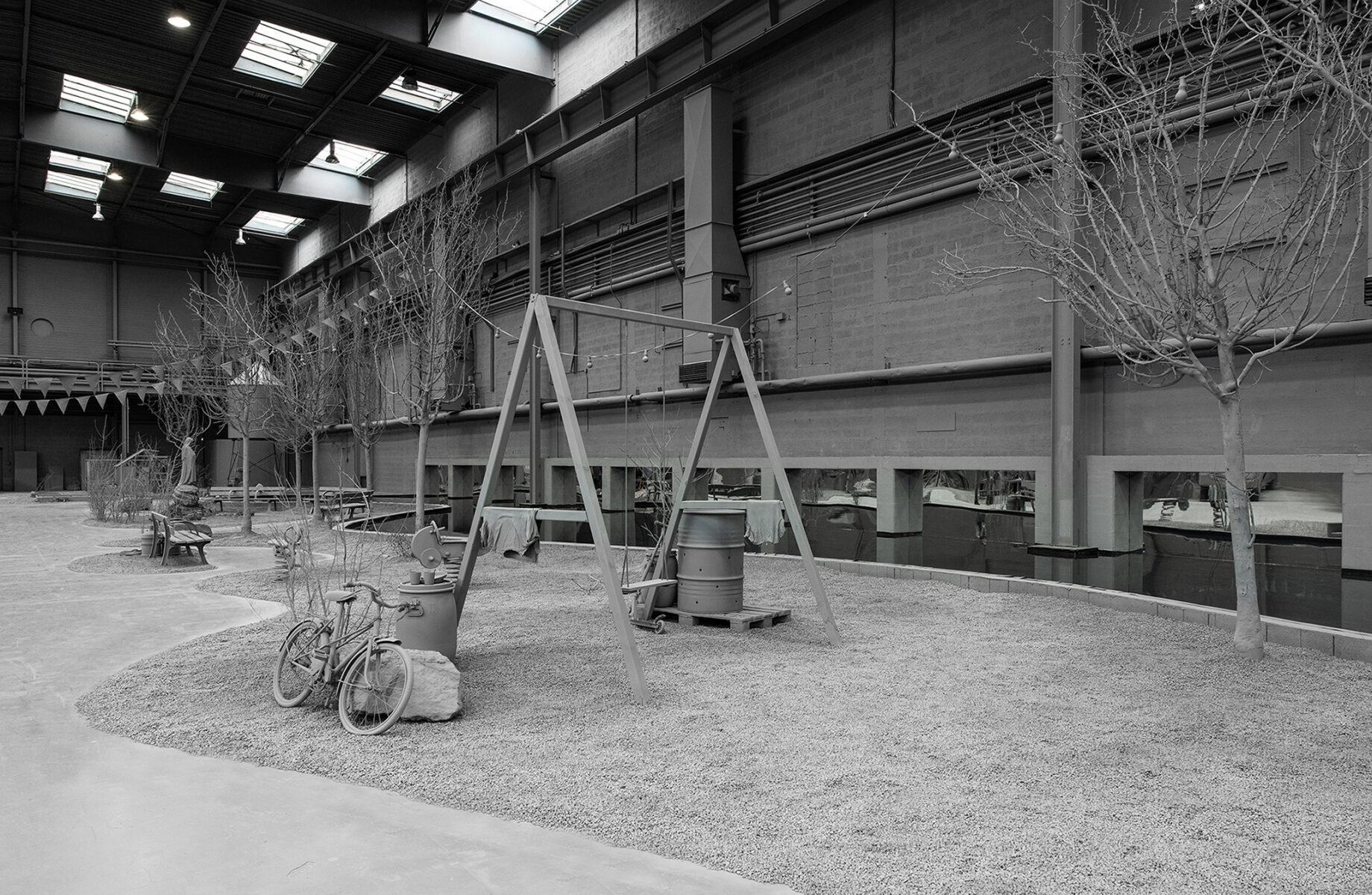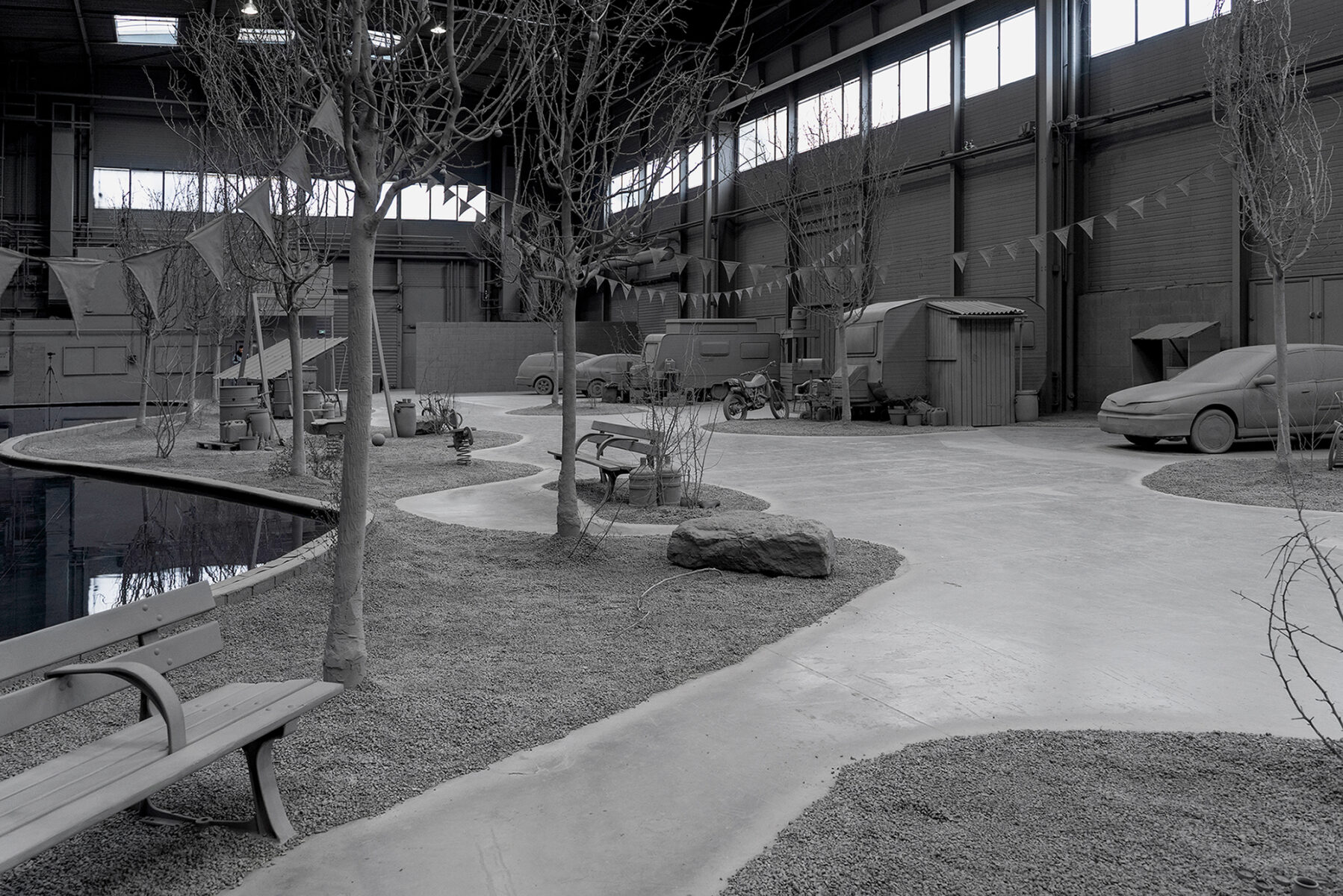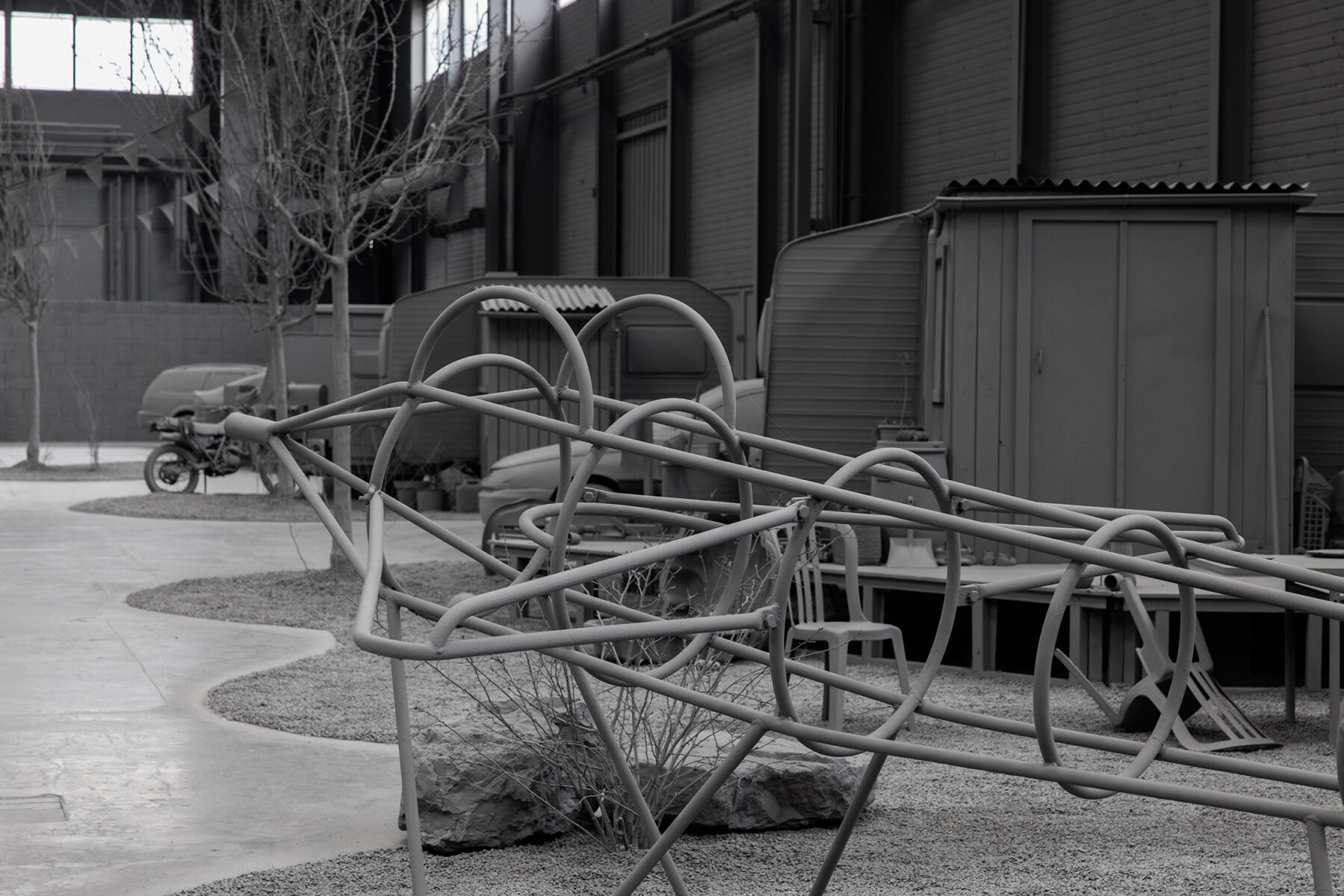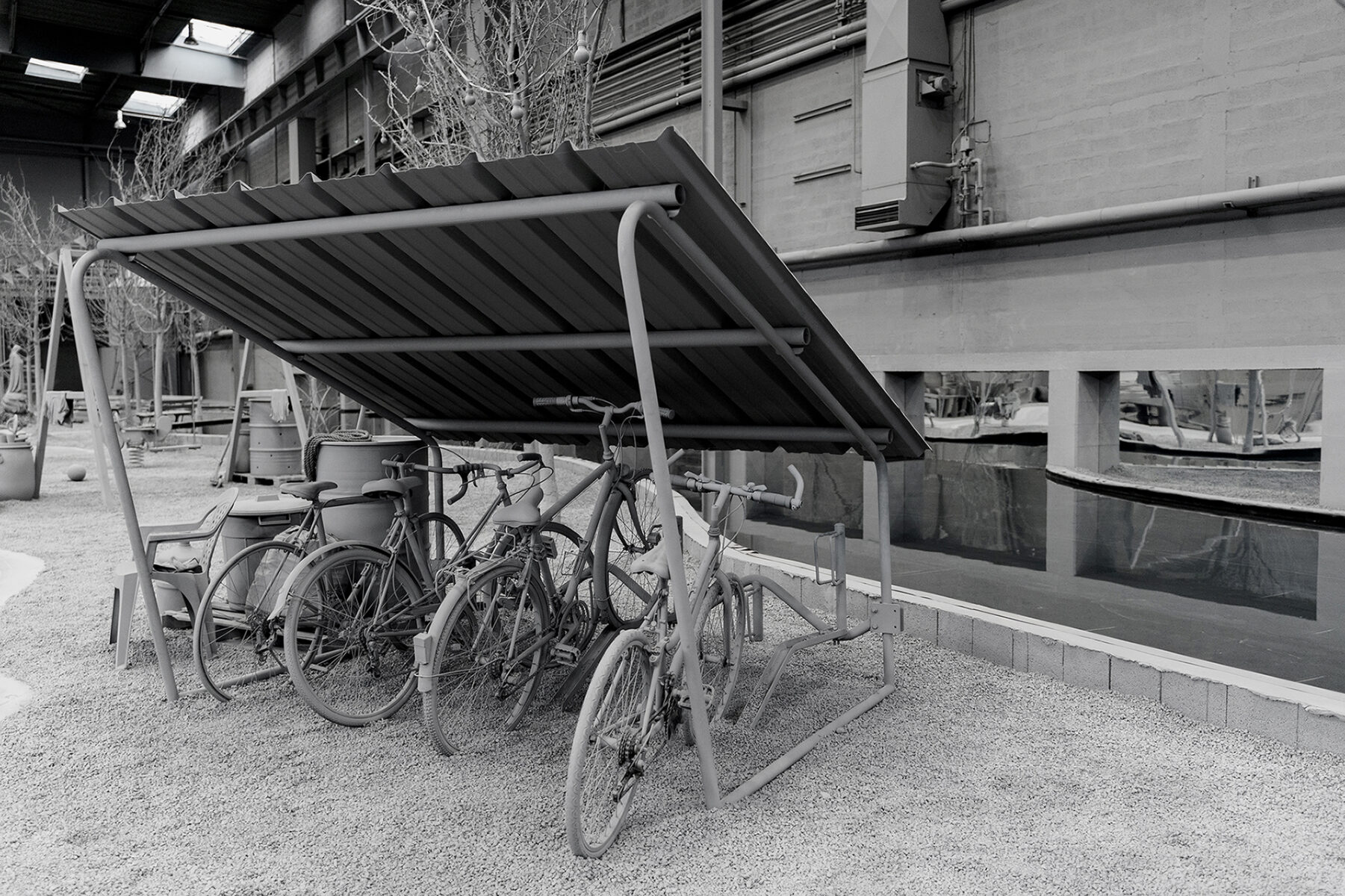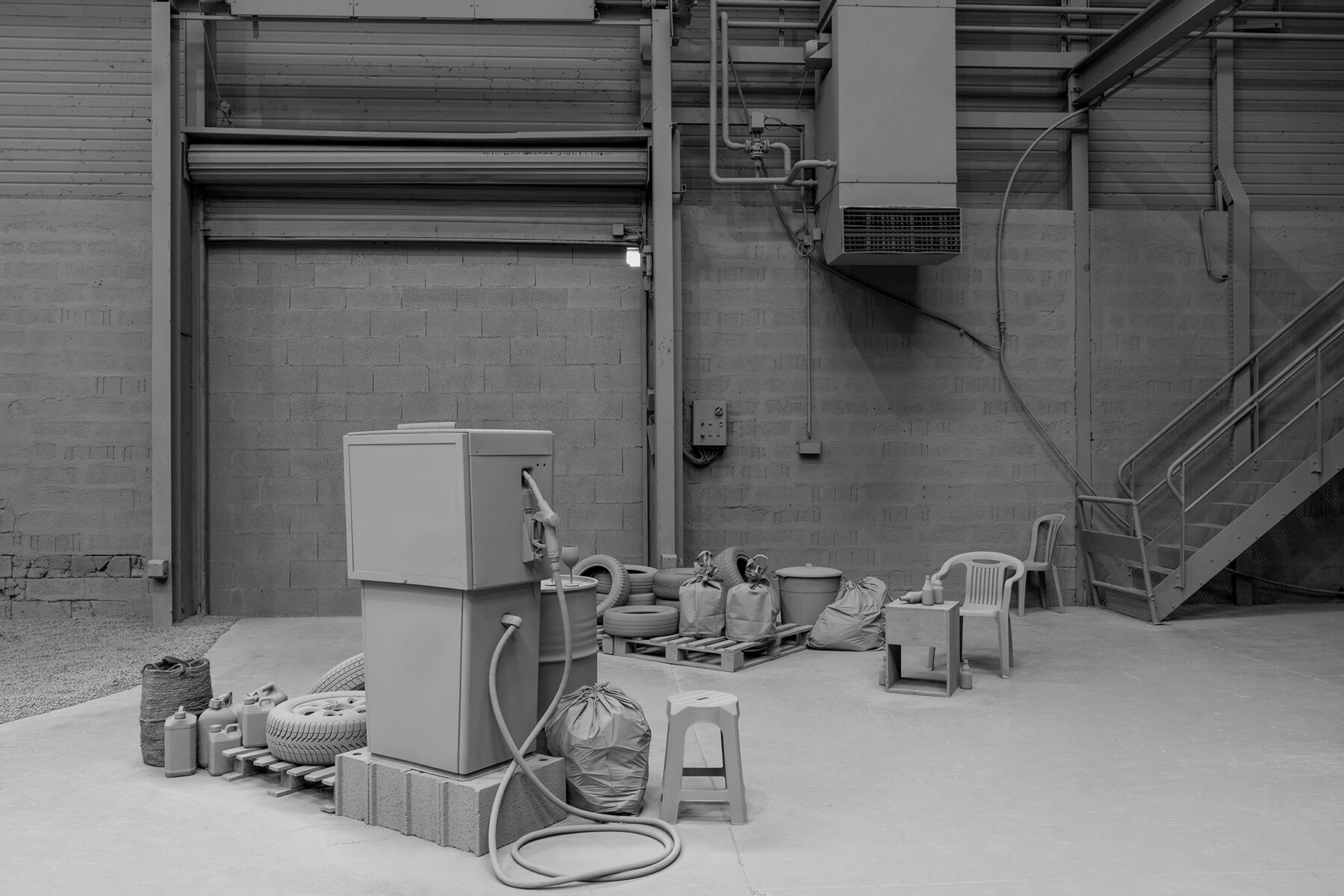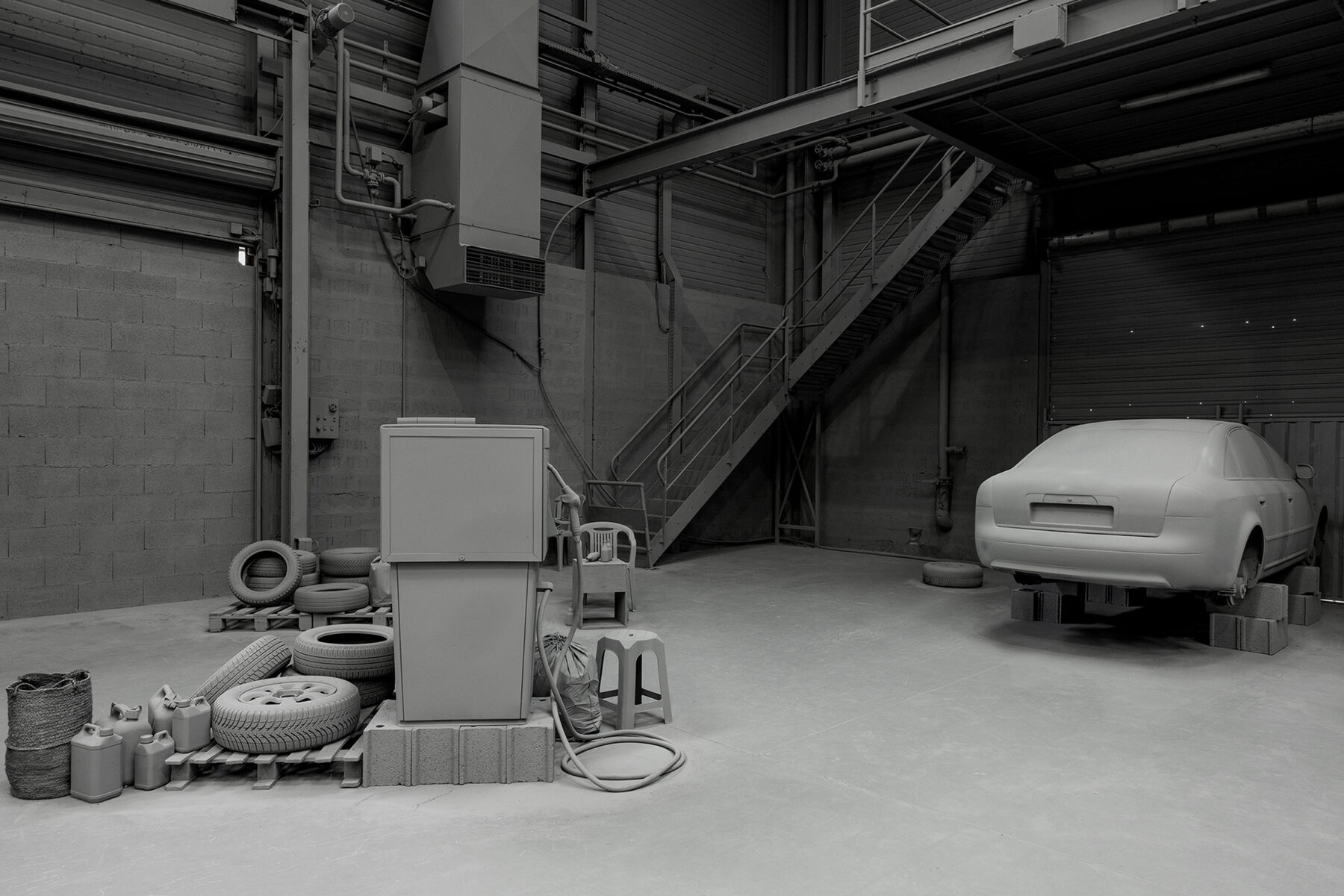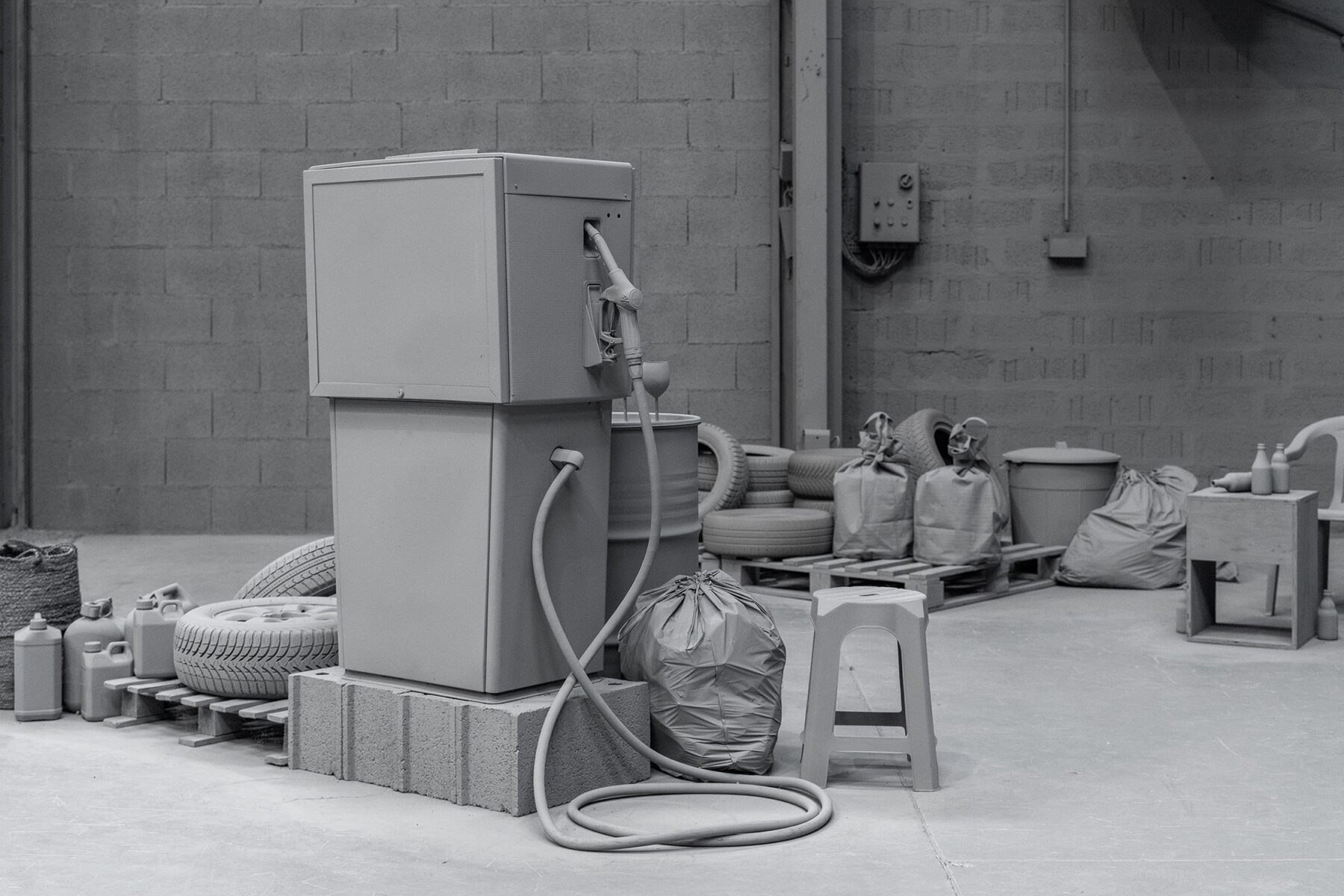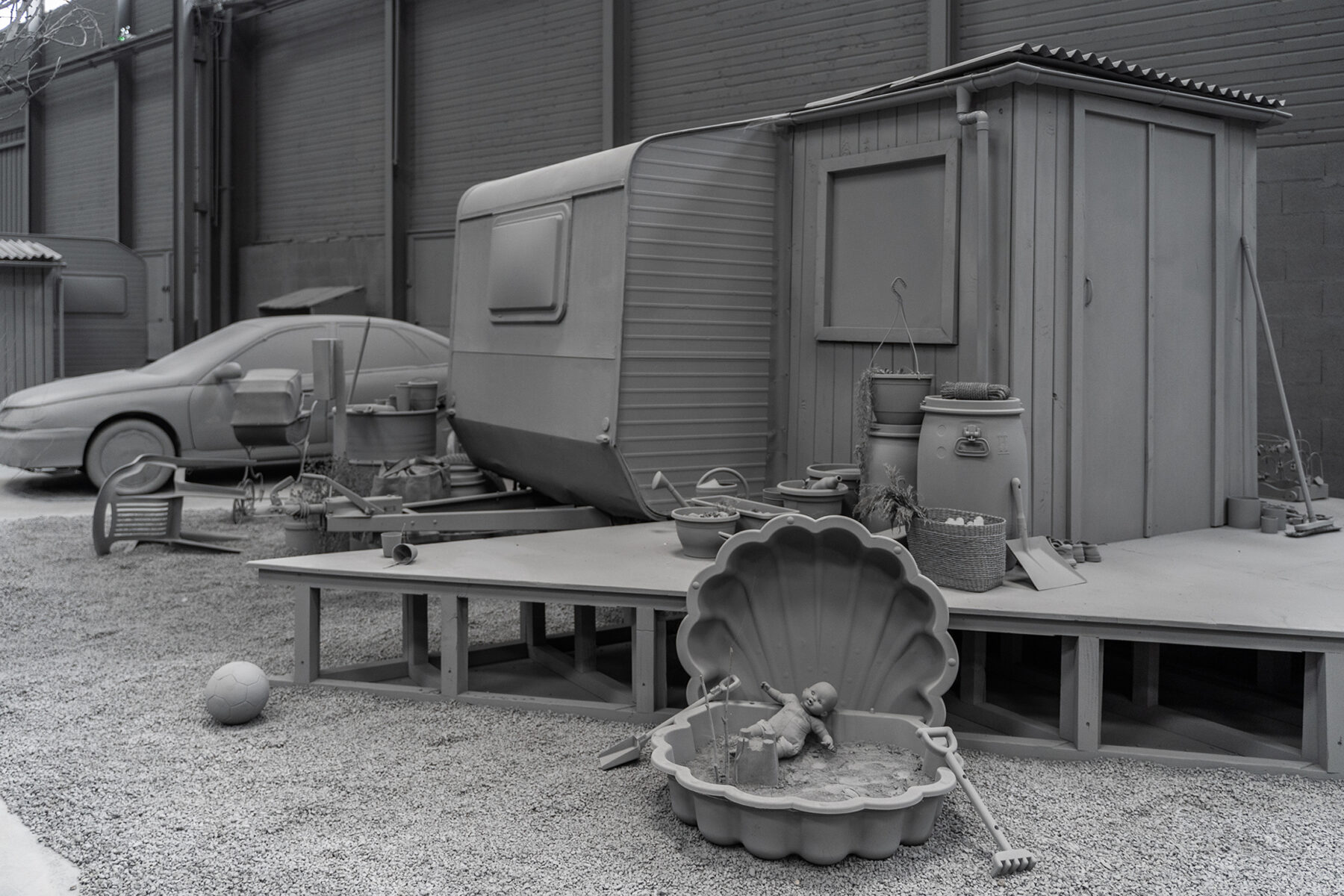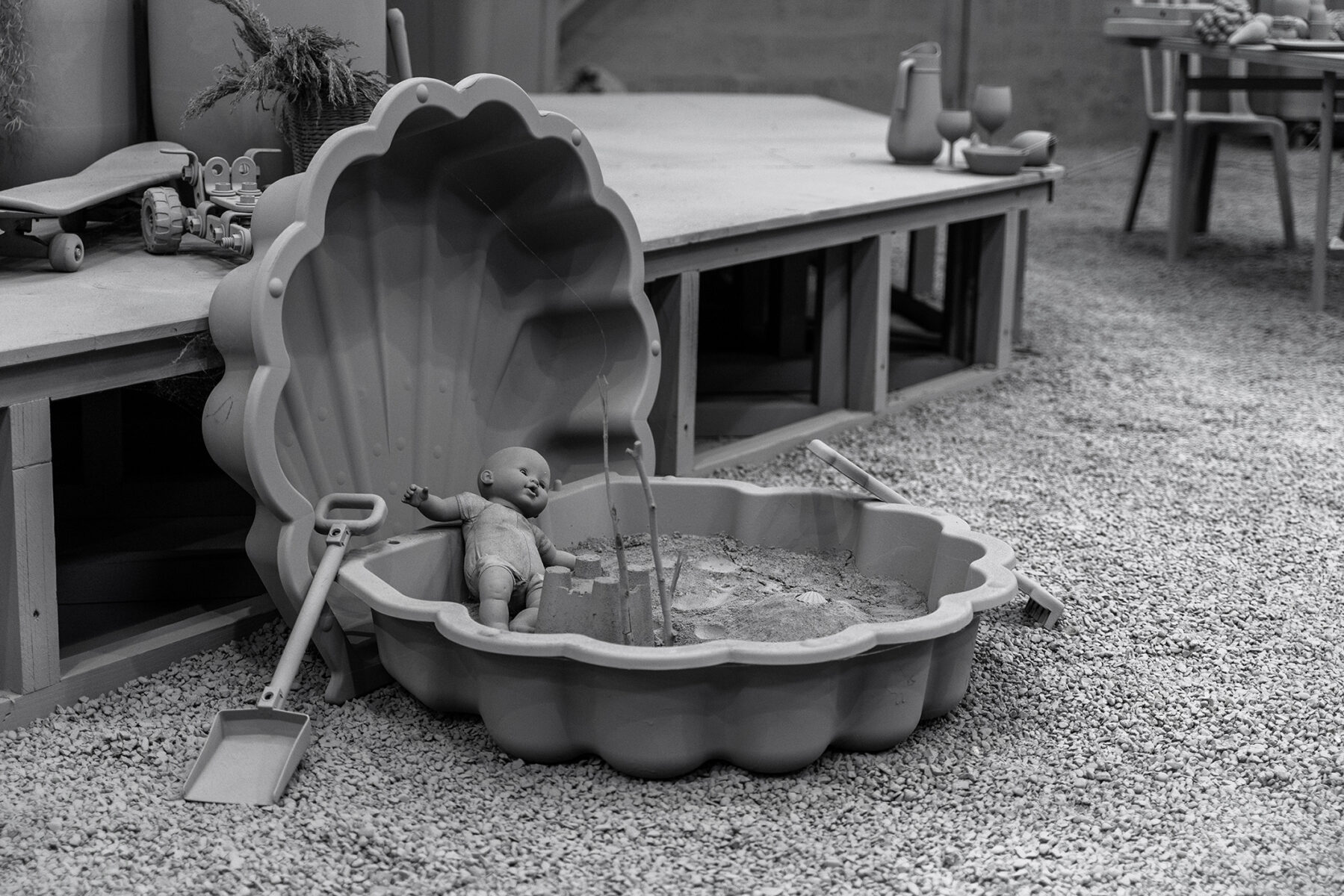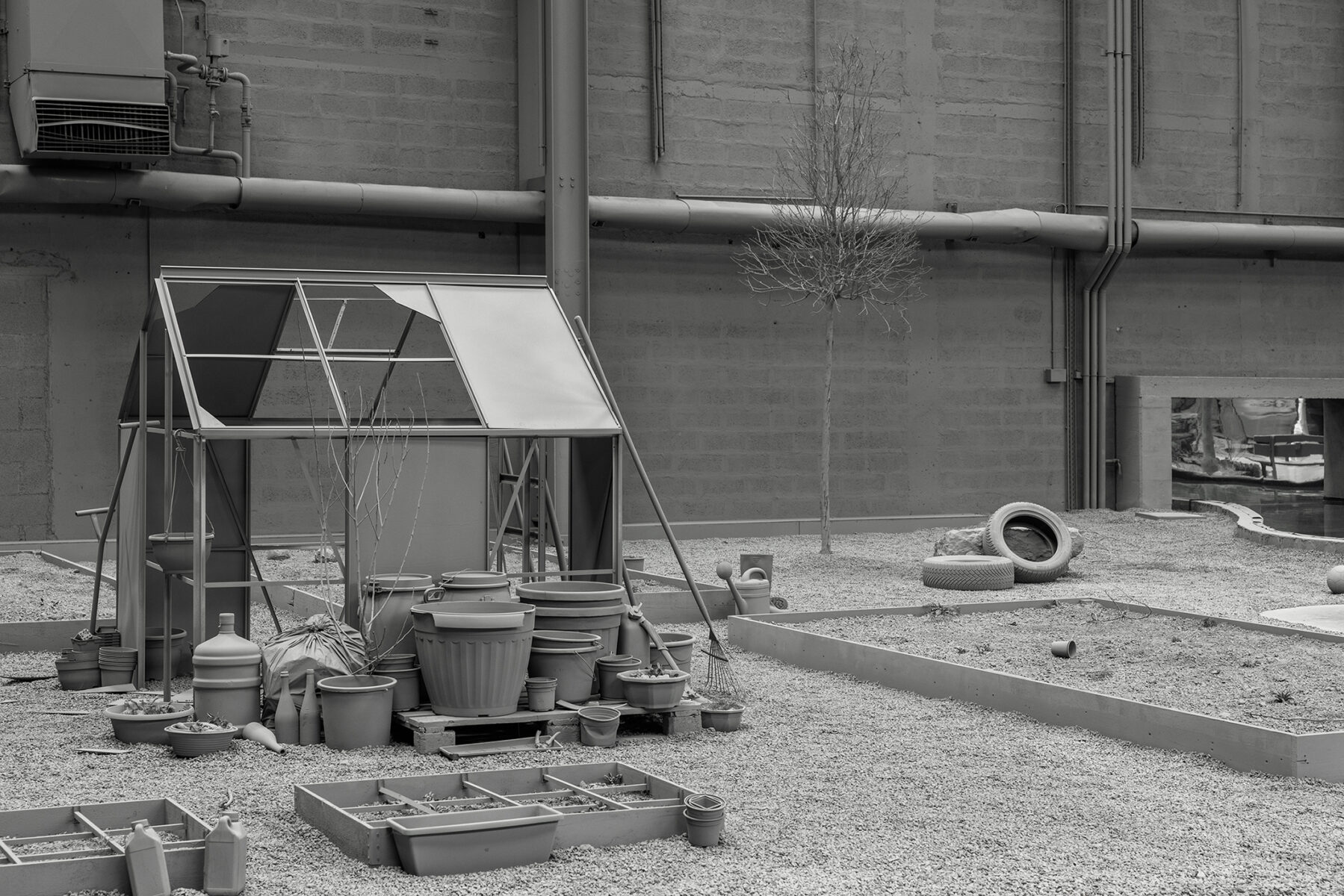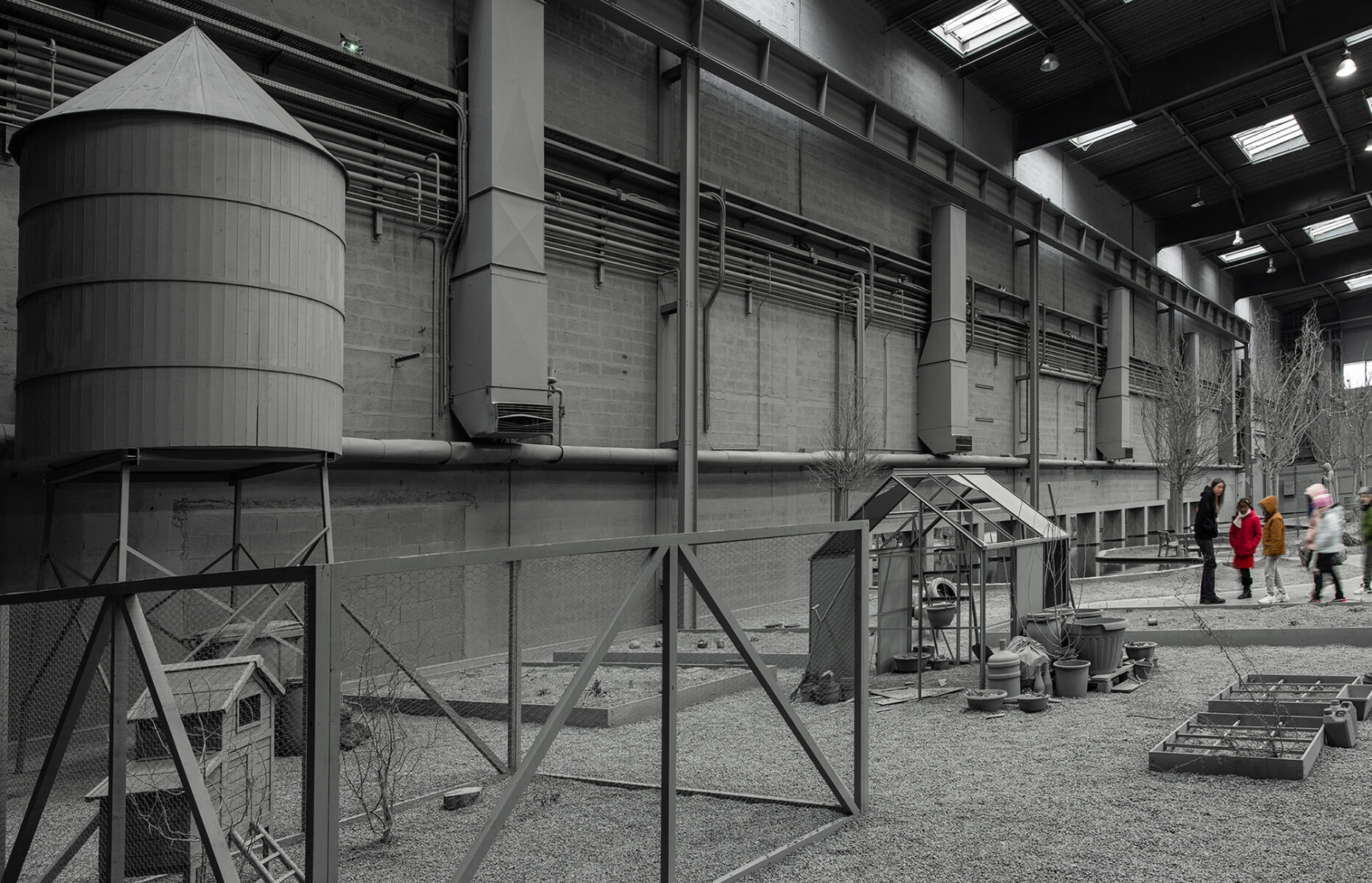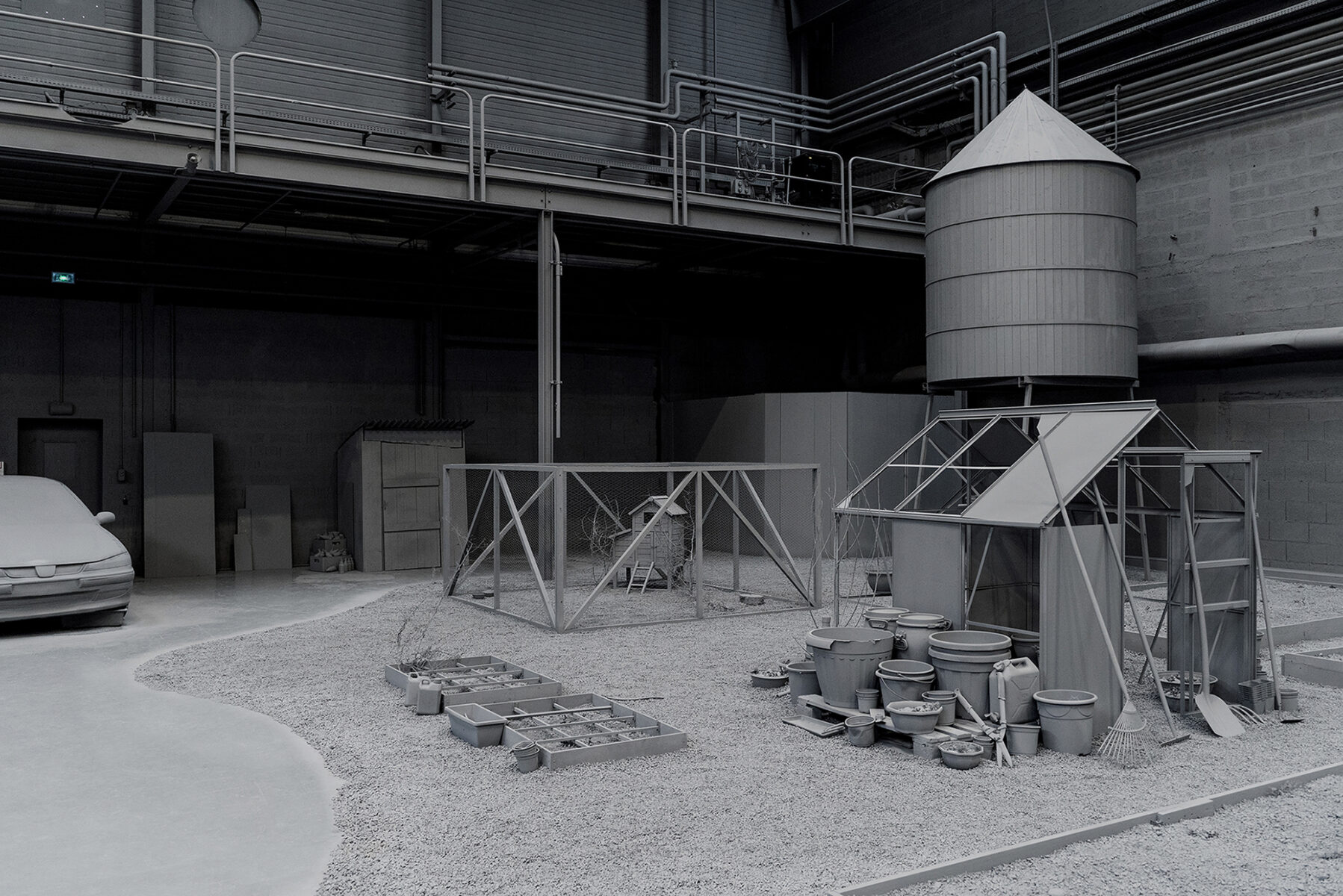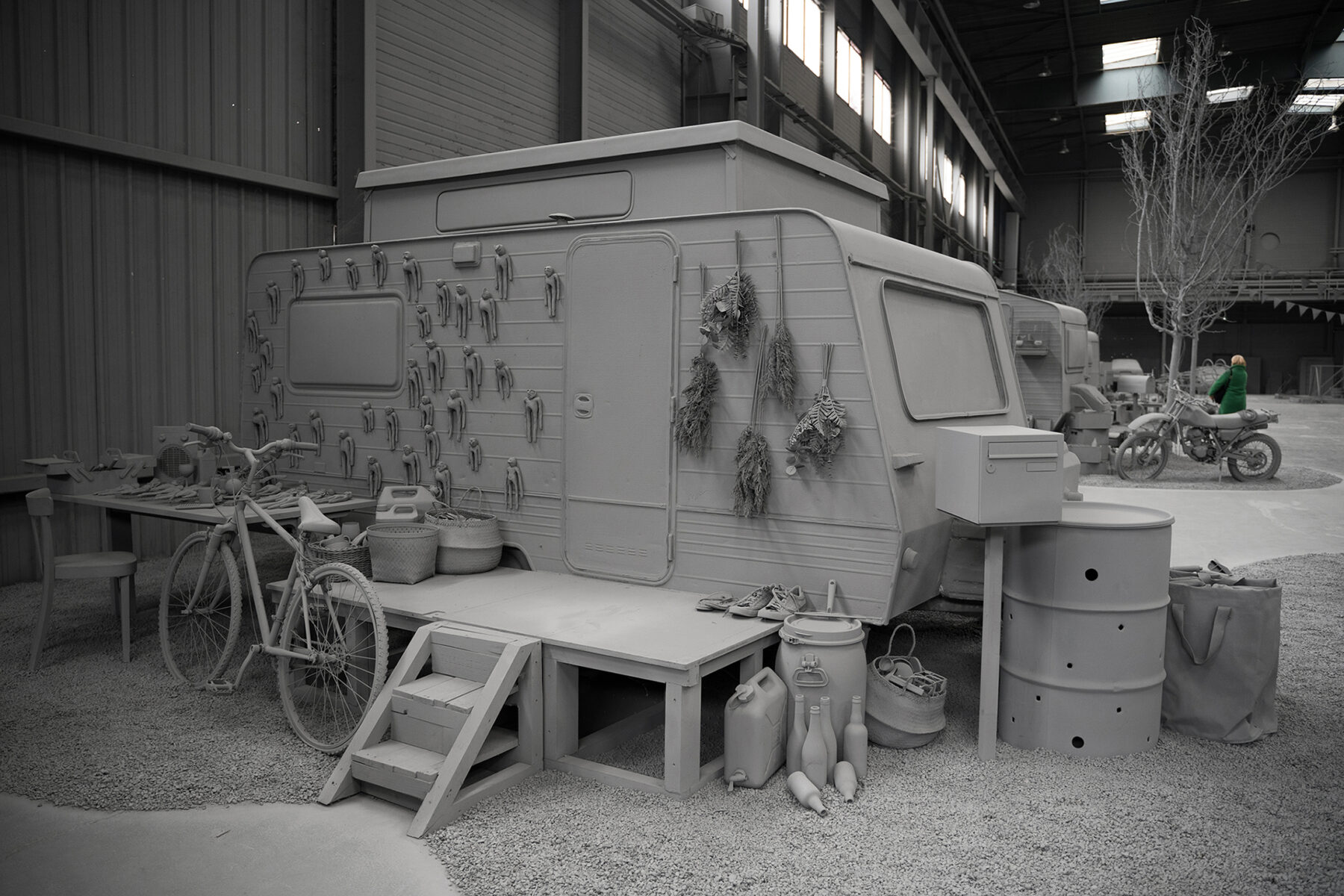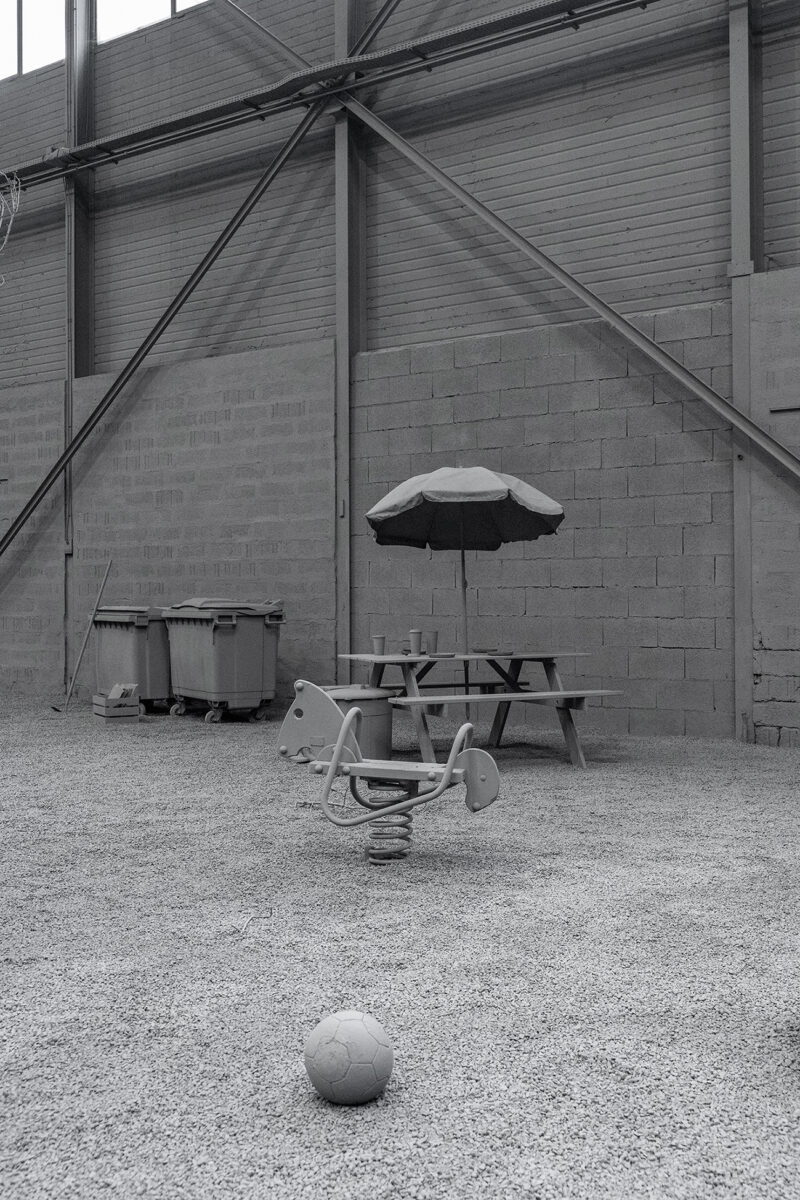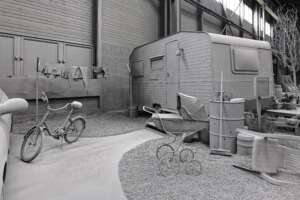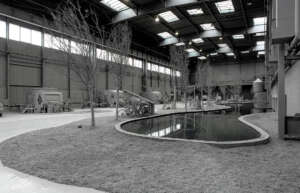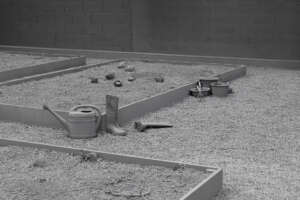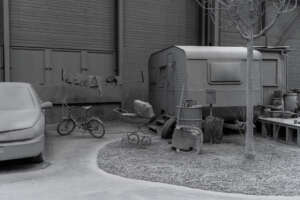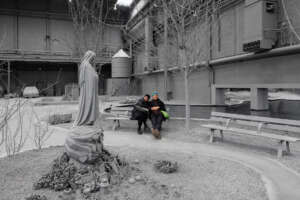We Were The Last To Stay Immersive Installation, 2022. 7900 × 2400 × 1360 cm. Mixed media
'We were the last to stay' is an immersive and site-specific installation of 1900 m2, conceived and created for the Lyon Biennale.
The viewer enters a monumental factory hall, in which the artist creates a sculptural evocation of a life-size abandoned camping site, somewhere between a nomadic, improvised caravan camp and a dilapidated city park with a playground and a pond. There is also a vegetable garden and a repair place for cars.
It seems like an isolated place where a closed community of a handful of families might have lived together in a self-supporting way of life.
The entire installation is executed in monochrome grey, parts in black and white and an occasional touch of colour, making the whole quite ghostly, alienating, as if petrified, frozen in time, left discoloured under a layer of dust, or covered with ashes.
Each trailer tells the story of its fictitious inhabitants through the still lifes of abandoned furniture, banal objects and peculiar props lying around. In the park area, the vegetable garden, and nearby the pond the viewer will also discover references to subcultural rituals, faith, superstition, routine, and all kinds of pastime.
The installation is like a small contemporary ghost town, which talks about what an improvised life in the margins, away from the rat race and for a small fictitious community, possibly a commune, might have looked like; how that small fragile world may have resonated with the big one, and how the confrontation with time, space and especially each other might have caused the place to now being abandoned.
The title 'We were the last to stay' refers to the last inhabitants who stayed there when the momentum of the shared dream and lives had passed, and the setting turned from a lively place into a mood close to the sobering and melancholic emptiness after a party. The installation is a gigantic memento mori, and functions in a way as a kind of large cinematographic establishing shot, from which many possible stories can depart.
Images: copyright Biennale de Lyon 2022, Blaise Adilon
